- Skip to primary navigation
- Skip to main content
- Skip to primary sidebar


Money in Europe: What you need to know about getting cash in Europe
February 11, 2019 by Karen Turner Leave a Comment
As an American abroad, one of the most common questions that I’m asked by visiting friends and family what is the best way to get cash out in Europe. It depends a bit on your country, but this post will discuss European currency, what you need to do before your trip, best practices for getting cash out at the best rates, whether you need to carry around lots of cash, using ATMs in Europe, how to get the best exchange rates, and some tips for various European countries.
- 1 European currency
- 2.1 Notify your bank and credit cards
- 2.2 Set your withdrawal limit
- 2.3 Do you need to carry a lot of cash on you?
- 2.4 Bring a wallet or change purse that can handle more coins
- 2.5 Check the ATM withdrawal policies of your bank
- 2.6 Avoid taking out cash before your trip for when you arrive
- 3.1 Avoid traveler’s checks
- 3.2 Know the rough rate for conversion
- 3.3 Ensure you have at least one debit card with Visa or Mastercard, if not more.
- 3.4 Make sure your card is chip and pin
- 4.1 ATMs in Airports are convenient, however they usually have high fees attached to them
- 4.2 Try to look up banks, rather than ATMs, as these ATMs will have lower fees
- 4.3 Be aware of your surroundings and try to use ATMs within residential neighborhoods
- 4.4 Check the ATM before using it
- 5.1 Large bills may not be broken in many shops
- 5.2 Avoid exchanging money
- 5.3 It’s generally cheaper to pay in cash for small items and meals. I typically use a credit card for hotels.
- 5.4 Americans: Avoid keeping excess US dollars, most places will not accept them
- 5.5 In countries that don’t use the euro, you might be able to use euros in some cases*
- 5.6 Be careful about handing off your cards to be run in the back
- 6 Any other questions about taking out money in Europe?
European currency

Within the European Union, the euro is the dominant currency used, however, the euro is not the only currency. Certain countries within the EU have chosen to keep their own currency. Similarly, there are countries within Europe that aren’t part of the European Union that do not use the euro. ( Kosovo is not part of the EU, but they choose to use the euro as their currency.)

These countries use the euro : Austria, Belgium, Cyprus, Estonia, Finland, France, Germany, Greece, Ireland, Italy, Kosovo, Latvia, Lithuania, Luxembourg, Malta, the Netherlands (my home!), Portugal, Slovakia, Slovenia, and Spain.
These countries in Europe do not use the euro: Albania, Belarus, Bulgaria, Croatia, Czech Republic, Denmark, FYR Macedonia, Moldova, Hungary, Iceland, Liechtenstein, Poland, Norway, Romania, Russia, Serbia, Sweden, Switzerland, Ukraine, and United Kingdom.
Both one and two euro are coins, however beyond that, you’ll receive bills for the various denominations: 5, 10, 20, 50, 100, 500. In terms of coins, some European countries do not use the penny coin (e.g. the Netherlands), so your amount might be rounded to the nearest even amount.
What you need to do before your trip
Notify your bank and credit cards.
This is the most important notes that I have for travelers visiting Europe! If you don’t put on a travel notice for your cards, you won’t be able to use your cards. It’s disappointing and it’s happened to family members of mine. Inform your bank/credit card companies of travel plans.
Set your withdrawal limit
One pro tip of mine is to set your withdrawal limit a bit lower by default in case your card is stolen. I have my withdrawal limit at 150 euros per day and it can be updated easily if I had an emergency. As a traveler, I’d recommend maybe 200 euros if you’re concerned about needing to pay for a hotel in cash.
Do you need to carry a lot of cash on you?
No, you do not. Carrying a lot of cash on you is a liability whether it’s leaving it vulnerable in your hotel room and carrying it around with you on the street (making you more prone to pickpockets). It depends on your travel style, but you will be surprised how many European establishments will accept cards.
Some European countries like Germany and Albania tend to be more cash-based. Similarly, some countries (like the Netherlands) prefer a card system that is not used by many other countries (Maestro debit card). Generally, larger capital cities tend to be more oriented towards tourists, but you might see a shift once you visit smaller cities. Similarly, regional transit may not accept cards.
Bring a wallet or change purse that can handle more coins
Not everyone thinks about this, however you’ll need a change purse that can carry lots of coins . Both the euro as well as the 2 euro are coins, so I recommend bringing a coin purse at minimum ! You’ll be surprised how heavy your wallet can get if you are dealing with euros as well as several other currencies within Europe (especially in the Czech Republic).
Check the ATM withdrawal policies of your bank
Find out how much it will cost you per ATM visit. I recommend looking for a bank that has no ATM fees, which will make it easier to take out cash more often. In terms of US banks, I use Charles Schwab, which doesn’t charge ATM fees anywhere.
If you’re in a similar situation, I’d recommend visiting the ATM every few days (or as needed) to take out 100 euros (or 200 as needed) to minimize how much you’re carrying on you. If you have higher fees, I’d limit your cash to 300 euros at one time.
Avoid taking out cash before your trip for when you arrive
Although it seems natural to go to your bank to get some money, you’re going to get a less ideal exchange rate than if you use an ATM in Europe! There are generally ATMs (described as cash machines/cash points depending on the country) within most major airports, so don’t worry too much!

Best practices for getting cash out in Europe
Avoid traveler’s checks.
Although traveler’s checks have long been sold as the safest choice for paying for travel in Europe, however, you might be surprised how many places do not take them anymore. Save yourself the effort of gathering traveler’s checks and look into credit cards that do not charge foreign transaction fees before your trip to pay for hotels (and other extras).
Know the rough rate for conversion
On my first trip to Europe, I obsessed over the currency exchange rate, but unless you’re making a very large purchase in the thousands, you don’t need to check the currency rate obsessively. It will change a bit, but most likely not as markedly as you’d expect.
Even checking the rate every couple days or before you travel to a country that doesn’t use the euro will save you some hassle and help you figure out how much you’re spending in your home currency. This is particularly helpful in terms of using cash machines ( ATMS ), so you can estimate how much money you’re taking out in your home currency. (Google will instantly convert amounts for you in real time on your phone if needed.)
Ensure you have at least one debit card with Visa or Mastercard, if not more.
You never know when your cards will stop working, an ATM eats your card, or you forgot to clear your card for travel. It’s always good to always have a backup card. Visa and Mastercard are the two most popular card types in Europe, so if you have more than one, you’ll save yourself a lot of effort!
Make sure your card is chip and pin
European cards by default are chip and pin, so if your debit or credit card is not set up with chip and pin, you might want to check how to use it and/or replace it with a chip and pin card.
Without a chip and pin card, you might have some issues with card machines specifically designed for this purpose. (Many card readers in the Netherlands where I live are not designed for swiping.)
ATMs in Europe

ATMs in Airports are convenient , however they usually have high fees attached to them
One of the most convenient places to find an ATM is at the airport, however I recommend checking for the relevant fees as well as the exchange rate as these ATMS tend to be less than ideal. I sometimes take out a small bit of cash (40 euros) to allow me to get into the city center and/or my hotel before finding an ATM at a bank.
Try to look up banks, rather than ATMs, as these ATMs will have lower fees
Whenever you’re looking for a cash machine/ATM, I recommend searching for banks! There’s usually an ATM run by the bank itself and compared to third-party items, their fees might be lower (beyond your own international banking fees). Avoid Euronet ATMs at all costs!
Be aware of your surroundings and try to use ATMs within residential neighborhoods
This is a big one! When I was in Paris, someone on the free walking tour with me chose to use an ATM at a heavily trafficked corner near the Louvre. While he was using it, a man tried to extort him to take the cash while another lingered nearby.
I try to use cash machines in residential neighborhoods (where it’s quieter) and if I have to use an ATM in a popular area, I try to ensure that nobody else is close to me prior to quickly putting the money away.
Check the ATM before using it
Before using a cash machine, I generally will pull on the card reader portion. A skimmer is a device put on top of a card reader (for a restaurant or an ATM) in order to read your card and save that data for thieves. They’re harder to spot, but since watching this video of removing a skimmer in Vienna , I always tug a bit on the ATM and inspect the machine a bit before using it.
Other tips for money in Europe

Large bills may not be broken in many shops
If you’re taking out quite a bit of cash, be warned that many smaller shops and even commercial shops may refuse to break your bill that is 100 euros (and more). It’s frustrating, so avoid getting bills more than 100 euros (beyond paying for accomodation). I generally recommend getting out your money in twenties or fifties.
Avoid exchanging money
Although it seems like a good ideal to have some extra cash on you, the exchange rate at most money exchange booths is far less favorable than using an ATM. I recommend leaving your home currency money at home and waiting until you arrive. You’ll get more money to keep!
It’s generally cheaper to pay in cash for small items and meals. I typically use a credit card for hotels.
You’ll have an easier time paying for smaller meals as well as small items in cash. I typically use a credit card (that doesn’t charge foreign transaction fees) to pay for hotels, car rentals, and large purchases (e.g. flights).
Americans: Avoid keeping excess US dollars, most places will not accept them
Although it used to be that you should carry some US dollars just in case, I can tell you that people will think you’re an idiot if you try to pay in US dollars. Pay in euros (or the applicable local currency). You’ll get a better exchange rate and they’ll be readily accepted.
In countries that don’t use the euro, you might be able to use euros in some cases*
In not all countries, the euro is accepted (at a markup) on the local currency at shops. I saw this at Cesky Krumlov, which is very close to the Austrian border, as well as in Albania . In Albania, most tours and hotels quoted the price in euros and would give you a more favorable exchange rate if you paid in lek.
Be careful about handing off your cards to be run in the back
If you’re paying with a card, I generally prefer to pay at the front where I can watch my card be run. If your card is taken to the back, you don’t really know what they’re doing with it and it might provide someone the opportunity to write down your card information. I generally request that I come to the front desk to pay, which is a good precaution.
Any other questions about taking out money in Europe?
- Two months in Europe itinerary
- Packing list for two weeks in Europe
- How to use your phone abroad
- How to dress more European
- Your perfect Amsterdam itinerary

About Karen Turner
New Yorker–born and raised. Currently living in the Hague, the Netherlands after stints in Paris and Amsterdam. Lover of travel, adventure, nature, city, dresses, and cats.
Reader Interactions
Leave a reply cancel reply.
Your email address will not be published. Required fields are marked *
- The Netherlands
- New York State
- Other European destinations
- Work With Me
- Disclosure and Privacy Policy
- Jeju SEO Tool: Free SEO Writing Tool
You can unsubscribe anytime. For more details, review our Privacy Policy.
You have successfully joined our subscriber list.
TreasureHunter USA Inc. 251 Little Falls Drive Wilmington, Delaware 19808 +1 (915) 4632387 EIN 88-2174128
www.wanderlustingk.com is a participant in the Amazon Services LLC Associates Program, an affiliate advertising program designed to provide a means for sites to earn advertising fees by advertising and linking to amazon.com. As an Amazon Associate, we earn from qualifying purchases. We also participate in other affiliate programs
www.wanderlustingk.com all rights reserved © 2023 | Privacy Policy | Cookie Policy |
TravelAsker
How much cash should I bring to Europe?
Travel Destinations
December 6, 2023
By Kristy Tolley
When planning a trip to Europe, one of the most common questions that travelers ask is how much cash they should bring with them. The answer to this question depends on several factors, such as the length of your trip, your travel style, and the countries you plan to visit. However, there are some general guidelines that can help you determine the ideal amount of cash to bring.
Factors to consider before bringing cash.
Before deciding how much cash to bring, you should consider your travel style and preferences. For example, if you plan to stay in budget accommodations, cook your meals, and avoid expensive activities, you may not need as much cash as someone who prefers luxury hotels, fine dining, and guided tours. Additionally, the countries you plan to visit can affect your cash needs, as some destinations may be more expensive than others. It’s also important to consider any pre-booked activities or accommodations that require cash payments, as well as any contingencies or emergencies that may arise during your trip.
Currency exchange rates in Europe.
Currency exchange rates can have a significant impact on the amount of cash you need to bring to Europe. It’s important to understand the exchange rates for the currencies of the countries you plan to visit, as well as any fees or commissions charged by exchange bureaus or banks. Keep in mind that exchange rates can fluctuate, so it’s a good idea to monitor them before and during your trip.
Tips for budgeting your expenses.
To avoid running out of cash or overspending during your trip, it’s essential to budget your expenses carefully. Start by making a list of all your expected costs, including accommodations, meals, transportation, activities, and souvenirs. Then, allocate a daily budget for each category and stick to it as much as possible. Consider using a travel budgeting app or spreadsheet to help you keep track of your expenses.
How to calculate your daily budget.
To calculate your daily budget, divide your total trip budget by the number of days you will be traveling. This will give you an idea of how much you can spend each day. You can then adjust this amount based on your specific travel style, preferences, and itinerary.
Best ways to carry cash while traveling.
When traveling with cash, it’s important to keep it safe and secure. Consider carrying a money belt or a secure wallet that can be worn under your clothes. Avoid carrying large amounts of cash at once and spread your money across different locations to minimize the risk of loss or theft. Additionally, consider carrying a backup credit or debit card in case of emergencies.
Safety precautions for handling cash.
To avoid becoming a target for theft or scams, be discreet when handling cash in public. Avoid counting cash in public places, and be wary of strangers who offer to help you with your money. Use ATMs and exchange bureaus in well-lit and busy areas, and always cover the keypad when entering your PIN.
How to avoid ATM fees and other hidden costs.
ATM fees and other hidden costs can add up quickly and eat into your travel budget. To avoid these fees, consider using a credit or debit card that offers free international withdrawals or low fees. Additionally, some banks or credit unions may have partnerships with foreign banks that allow you to withdraw cash without fees.
When to rely on credit cards instead.
Credit cards can be a convenient and secure way to pay for expenses while traveling. However, they may not be accepted everywhere, especially in smaller towns or rural areas. It’s also important to consider the foreign transaction fees and currency conversion rates that may apply when using credit cards abroad.
How to handle emergencies and unexpected expenses.
Even with careful planning, emergencies and unexpected expenses can arise during your trip. To prepare for these situations, consider bringing a small amount of emergency cash or a backup credit or debit card that you can use in case of emergency. It’s also a good idea to have travel insurance that covers unexpected medical expenses, trip cancellations, or lost or stolen belongings.
How to exchange money in Europe.
There are several ways to exchange money in Europe, including exchange bureaus, banks, and ATMs. Exchange bureaus may offer better rates than banks, but they may also charge higher fees. ATMs are a convenient option, but they may charge withdrawal fees or have lower daily limits. It’s important to research your options and compare rates and fees before exchanging money.
Conclusion: The ideal amount of cash to bring.
The ideal amount of cash to bring to Europe depends on your travel style, preferences, itinerary, and budget. As a general guideline, it’s recommended to bring enough cash to cover your daily expenses for at least the first few days of your trip, as well as any pre-booked activities or accommodations that require cash payments. You can then withdraw more cash as needed or rely on credit cards for larger expenses. By carefully budgeting your expenses and following these tips, you can enjoy a stress-free and budget-friendly trip to Europe.
Related Posts
- Would you say that Albania is the most prosperous country in Eastern Europe?
- Would Tunisia be considered part of Europe for travel insurance purposes?
- Would Eastern Europe be considered as a stable region?
- Within what latitude range can deciduous forests be found in Europe?
- Will the VWP clock reset if I travel from the US to Europe?

Kristy Tolley
Leave a comment cancel reply.
- Search Search Please fill out this field.
- Take Some Cash
- Using a Credit Card Abroad
Ensure Your Card Will Work
- Traveler's Checks
Going Digital
The bottom line.
- Credit Cards
- Tips & Tricks
Is Cash or Credit Better for European Trips?
Daniel has 10+ years of experience reporting on investments and personal finance for outlets like AARP Bulletin and Exceptional magazine, in addition to being a column writer for Fatherly.
:max_bytes(150000):strip_icc():format(webp)/picture-53274-1372725478-5bfc2aad46e0fb00260afa6a.jpg)
Thomas J Catalano is a CFP and Registered Investment Adviser with the state of South Carolina, where he launched his own financial advisory firm in 2018. Thomas' experience gives him expertise in a variety of areas including investments, retirement, insurance, and financial planning.
:max_bytes(150000):strip_icc():format(webp)/P2-ThomasCatalano-d5607267f385443798ae950ece178afd.jpg)
A trip to Europe can be one of the more memorable voyages of your life. But the last thing you want to do is sour your voyage by finding yourself unable to pay for dinner or train fare while you’re there.
While it's okay to put most expenses on your card, it's wise to also carry some cash for emergencies. Being over-prepared can help you avoid a lot of trouble—and perhaps some missed sightseeing opportunities—while you’re traveling.
Key Takeaways
- European travelers should always have some cash on hand; getting it from an ATM abroad is usually the easiest, most advantageous way.
- If you need cash from an ATM, it's usually better to use a debit card, because credit cards often charge a high interest rate for a cash advance.
- Major credit cards are generally accepted, especially in cities. Check with your card issuer about foreign transaction fees and currency exchange fees.
- Unlike the U.S., European credit card machines usually require a PIN. You can get this from your card issuer before you leave home.
- Contactless pay systems like Apple Pay are increasingly common.
Don’t Expect to Get Too Far Without Cash
There’s a lot that you can buy with a credit card in Europe, so bring at least one. But don’t expect to get very far without a little cash, too—especially if you’re a tourist. Transportation services, such as taxis and buses, often require local currency. The same is true if you hire a guide to help you navigate your new surroundings.
Don’t bother to load up on cash before your flight. You can simply visit an ATM once you arrive and withdraw euros—the currency of 20 European countries—or other local currencies. With a currency conversion fee between 1% and 3%, and sometimes a nominal transaction charge, ATMs can be one of the least expensive and most convenient ways to get cash overseas—though you might want to check out local currency exchange bureaus, just to compare rates.
If you have more than one bank account, you may want to compare the different international ATM fees beforehand and of course, go with the one that’s the most economical.
Avoid using credit cards for cash at ATMs. Most card issuers treat ATM withdrawals as a cash advance—meaning that in addition to ordinary foreign transaction fees, you're also paying a higher interest rate.
Tips for Using a Credit Card Abroad
Many businesses, particularly those that cater to travelers or are in cities, accept international credit cards . Carrying plastic also cuts down on how much cash you have to carry, which eliminates some of the pain if your wallet is lost or stolen. Pickpockets are not uncommon in most European cities, and they know how to identify tourists.
If you’re planning to bring a credit card, there are a couple of things to remember. First, bear in mind that some cards are more widely accepted than others. MasterCard and Visa are among the most commonly used payment networks in Great Britain and the Continent. American Express, Discover, and Diners Club are less widespread, though some merchants will take them. Some cards also offer travel perks or cash rewards, so it's worth doing some research to find the best credit cards for your needs.
You can use your credit card to get cash at an ATM, of course (and you may have to, if your bank card doesn't participate in an overseas network). However, this should be a last resort: a credit card withdrawal will be considered a cash advance, which normally comes with higher interest rates than ordinary purchases. In addition, check with the card issuer (or dig out your terms and conditions paperwork, if you can find it) to see if there's a foreign transaction fee for international purchases or a currency conversion fee. They add up.
Some merchants now give you the option to pay with your card in either the local currency or in your home currency (dollars or whatever). Paying in your currency is a way to get around that foreign transaction fee. If your card doesn't charge one, you might as well pay in the local currency.
It’s also important to realize that Europe's credit card technology is far more advanced, often using chip-and-PIN software. This means the cards have an embedded chip that helps validate the card's physical presence and legitimacy. Rather than signing a receipt, cardholders often enter their four-digit PIN code to complete the transaction. American banks have rapidly rolled out cards that have the chip due to changes in fraud liability laws, but the PIN portion is often still not the norm.
You may still get away with a standard American card, as long it has a chip. If it doesn't, the merchant will likely ask for your PIN. If you don’t know it—after all, PINs are rarely used for U.S. credit card transactions—it’s a good idea to get the four-digit number from your bank before embarking on your trip or reset it via telephone or computer to something easy to remember.
Also, remember to notify your bank that you will be traveling overseas . Many banks have enhanced their fraud detection protocols, and if they notice suspicious activity, such as an ATM withdrawal in Venice when you've never been there before, they could deactivate your card out of an abundance of caution.
Forget About Traveler’s Checks
If you’re worried about carrying a lot of cash, another option is to purchase traveler’s checks . The nice thing about these checks is that, as long as you record the number on each one and store it in a secure location, the issuer can usually replace them for free if they’re stolen.
However, traveler's checks are a dying breed; many places don't take them anymore. Even if a merchant accepts traveler’s checks, it’s often with a poor exchange rate. And they're costly: Banks may charge a fee worth 1% to 2% of the face value to purchase the checks.
One alternative is to carry a modest amount of emergency cash with you in a location pickpockets can’t easily get to—in other words, not in backpacks or an unsealed pocket. Few retailers or hotels accept personal checks, so you may as well leave those at home.
Increasingly, merchants throughout Europe accept Apple Pay and other digital "contactless" payment systems. Apple Pay is accepted in over 80 countries as of March 2024. Paying with a tap of your phone can alleviate security concerns about having pockets picked and wallets stolen.
If you use Apple Pay to pay with a card overseas, that card's same overseas charges, as discussed above, will apply. The Apple Pay Cash card is accepted wherever Visa cards are .
Should You Use Cash or Credit When Traveling to Europe?
Most international travelers will end up using a combination of cash and cards when visiting Europe. While credit cards are accepted in most situations, currency can be more convenient for public transportation and small vendors. It's also wise to carry an emergency fund with enough cash for a few days, just in case your card gets lost or stolen.
What Is the Most Common Credit Card in Europe?
Visa, Mastercard, and EuroCard are widely accepted throughout Europe, and American Express is usually accepted in tourist destinations.
Will My Bank Card Work in Europe?
Debit cards with a Mastercard or Visa logo are widely accepted in Europe. American Express is somewhat less common, except at tourist destinations. Most banks charge a foreign transaction fee and/or a currency conversion fee, so it is worth double-checking these costs before departure . You should also let your bank or card issuer know about your travel plans in advance, or else they might flag some of your overseas transactions as potential fraud.
As the saying goes, “When in Rome, do as the Romans do.” These days, that means carrying a chip-enabled credit card and a little cash, just in case. Also, pack your bank debit card for ATMs to keep yourself supplied with additional coin, as needed.
Disclosure: At the time of publication, the author did not have holdings in any of the companies mentioned in this article.
Apple. " Countries and Regions that Support Apple Pay ."
Europe for Visitors. " Using Credit Cards in Europe ."
:max_bytes(150000):strip_icc():format(webp)/GettyImages-1214857151-7489c879345246b0bacefaf1d88a3738.jpg)
- Terms of Service
- Editorial Policy
- Privacy Policy
- Your Privacy Choices

- NORTHERN IRELAND
- TRAVEL TIPS
How To Save Money Traveling in Europe: 15+ Tips and Tricks
Disclosure: This post may contain affiliate links, meaning I get a commission if you decide to make a purchase through my links, at no extra cost for you!
Are you planning a trip to the Old Continent and wondering how to save money traveling in Europe? We are here to help!
Europe is not as expensive as you may think. It’s all down to organisation. Most people visiting Europe (especially first timers) are not aware enough of the local habits and tend to go for the easy option instead of going for the cheaper option.
If you know how to get around and where to book everything, you will be in a much better position to save money while travelling.
In this article, you will discover all my tips to save money traveling in Europe.
🔎 Table of Contents
How to find cheap flights to and in Europe
Here are some tips to save money on flights to Europe.
1. Use Skyscanner

Skyscanner is a game-changer when it comes to booking flights. It’s a flight comparison website that works extremely well for flights to and around Europe.
Skyscanner is a Scottish company. It’s based in Edinburgh and when it comes to finding the best fares in Europe, it sets the standard.
Not only will it find all the flights available but there are also many hacks you can use to find the best flights.
The website is very intuitive and has very unique functionalities.
For example, instead of searching for a specific destination and dates, you can:
- Search for the cheapest month
- Search for the cheapest dates (in a chosen month)
- Include nearby airports
- Choose a country as a destination or departure location
- Search for “Everywhere” and it will show you the cheapest flights everywhere in the world
This means that if you want to get the best flights deals, you can just search “To: Everywhere”, “When: Cheapest dates” and it will show you all the options.
This tool is ABSOLUTELY AMAZING and truly is all you need to get the best flight deals to Europe.
Here are some examples of deals I got in the past using Skyscanner:
- Toulouse – London (single): 8 euros
- Manchester – Dublin (return): £19
- Manchester – Warsaw (single): £10
- Manchester – Cagliari (return): £40
- Manchester – Brussels (return): £28
Please note that Skyscanner also offers comparison tools for car hires.
Click here to go to Skyscanner.
2. Be flexible with your travelling dates

This one is probably the best travel money-saving tip of them all.
Flights, trains, buses and hotels tend to get expensive when you are not flexible with dates and destinations.
If you want to go to Spain in July, it will obviously be more expensive than going there in March. Because everyone wants to be in Spain in July.
Same thing, if you want that flight on friday evening so you get to have the whole weekend there and not have to take the friday off, well that will be more expensive than a flight on tuesday at 2pm.
And that’s normal, we all want that! We all want to get the most of it without having to take more days off.
But because there is high demand and low offering, prices shoot up! It’s basically like the stock market.
If you want to get the best travel deals, you have to be flexible on:
- the destination
- the dates (don’t go during the high season, school holidays or bank holiday)
- the day of the week (Thursday to monday are generally more expensive, tuesday and wednesday are way cheaper)
- the time (early morning and late evening flights are more expensive, flights in the middle of the day are the cheapest).
Basically book what others don’t want!
Of course, this is not always possible but as all the other tips to save money while travelling, it’s up to you to decide whether it’s worth it or not!
As a general thing, here are some things you should be looking for:
- Book flights for June or September. The weather in Europe is excellent in June and September but they are less popular months because the kids are still at school. This means that prices are lower, the weather is nice and it’s less crowded. The dream!
- Look for flights on a Wednesday. Flights on Wednesdays are less demanded so they are usually much cheaper. Alternatively, look for Tuesdays and Thursdays.
3. Check out the European low cost airlines

In Europe, we are lucky to have so many low cost airlines. You can find fares for as cheap as $10!
This also includes flights from the USA!
Although Skyscanner should pick up all fares, it’s always worth having a quick look at the airlines’ website as sometimes they run very interesting promotions. Here are the ones you should keep in mind:
- Ryanair . This is the ultimate cheap airline. It’s an Irish company but they have flights to literally everywhere in Europe and even North Africa. They also have loads of flights to smaller airports which can be very interesting. Their baggage policy though is pretty bad.
- Icelandair . If you are flying from the USA, Icelandair will be the perfect airline to get cheap flights.
- Volotea . If you are thinking about visiting Spain, France or Italy, this one is for you! They are super cheap!
- Vueling . Ideal for flights to Southern Europe, especially Spain.
- Easyjet . Similar to Ryanair. They have flights everywhere in Europe but their baggage policy is much better than Ryanair.
Tips to save money on currency exchange
There are 50 countries in Europe and only 19 of them uses the Euro. This means that you will probably have to juggle between different currencies.
Exchanging money can be both expensive and a hassle. Stressing about getting money (or spending the money you got) is not pleasant. Also, your bank might charge you insane fees for paying or withdrawing money abroad. This can be avoided!
Here are some tips to save money on currency exchange.
1. Use the Wise (FKA Transferwise) App and Debit Card

Over the years, I tried pretty much every possible way to exchange currency including local bureau de change, banks, debit & credit cards, Travelex… Although some were better than others, my world literally changed once I discovered Wise (FKA Transferwise)!
Wise is a website and mobile app that enables you to create an account where you can keep several currency wallets for free.
You can also get a Master card debit card for a very small fee.
You can add as many wallets as you need which means that you can keep dozens of currencies onto the same card and app. You can add as much money as you want and convert it as you go.
But it doesn’t stop here, you can also make international transfers for a very little fee!
It’s absolutely brilliant because the fees are up to 10 times cheaper than with your banks and the exchange rate so much better.
For the same amount of money, you get so much more! To compare the price difference, click here.
Here is how it works! Wise has bank accounts in each currency they provide.
They never actually change the money, which is why they can provide such awesome rates, they just get money in one place and send it to you from another one.
For instance, you want to change 100 GBP to USD. From your bank account, you send your £100 to a UK bank account belonging to Transferwise. Once they get it (which is pretty instant), they send to your USD wallet or USD bank account of your choice, the USD equivalent from their USD account.
Here are the advantages of using Wise :
- you get a better exchange rate
- you pay less fees
- the account is free
- it’s quick and easy
- The prepaid debit card is super cheap
- you can keep track of everything in the mobile app
Click here to create a free Wise account.
Tips to save money on transport in Europe
Transportation will represent a big part of your budget in Europe so it’s important to choose the best options.
1. Use public transport instead of taking a taxi

Taxis are always the most expensive transport you can take. Even if you go for a cheaper alternative such as Uber or Lyft, it’s still quite a budget!
The cheaper way to go around is always to take public transport. Especially since our network of public transport is so awesome in Europe!
A $25 ride is generally about $2 via public transport, may it be underground, bus or tram.
You should only use taxis when you don’t have any other options. For example, your flight lands very late at night or on the contrary, you’ve got to get to the airport very early.
Public transport will generally cost you maximum $15 a day (and yet that would be for an expensive city such as London). This amount of money would barely pay for one taxi ride.
You can literally go everywhere you need during a whole week with public transport for the same money that you would spend in taxis in a day.
It’s also worth noting that most cities offer discounts if you take a day or week pass.
Finally, here is another advantage of taking public transport: it’s often quicker!
In Paris or London for example, there is no need to even think about renting a car or taxis, underground stations are everywhere and will bring you anywhere you need in no time.
Last thing, if there is one place from where you should always prioritize public transport it’s from the airport.
Taxis and Ubers always charge you a lot more for rides to and from the airport. Most of the time, it’s an expense you can spare as all airports have shuttles or trains to the city centre.
2. Walk as much as you can

There is another medium of transportation that is literally as cheap as it can get: walking! Walking is completely free! (and good for your health if I may add).
When you travel in Europe, try to walk as much as you can! Walking is great for two reasons:
- It’s free (and we love free stuff)
- You can get to discover so much more when you walk. That’s how you experience a place the best. Just walk around and get lost!
- European cities of full of famous and hidden gems. Unless you want to visit a completely different area, you can easily walk for hours without noticing it.
Of course, I am nowhere near implying that you should be walking everywhere! There is only so much walking one can do.
But sometimes, instead of taking an uber or a bus, just walk there. If it’s less than 25 minutes walk, it’s generally not that far. Also, you will see so much more along the way!
Another little tip. When you plan your itineraries, try to gather all activities depending on their location. If you gather the one that are near to each other, you will be able to walk from one to another. This will both save you time and money!
3. Opt for low cost coach travel
If you want to visit several European cities, you should consider taking a bus instead of flying or taking the train. There are many low cost coach companies and their tickets are cheap as chips!
The buses are very comfortable as well and there is free Wi-Fi. Admittedly, the journeys can be a bit long but it’s so cheap that it’s worth it.
Here are some of the companies you should look at:
- Megabus . This is the most famous one. They go a bit everywhere in Western Europe but as it’s a British company, most of their routes start in the UK.
- National Express . A second British company. They offer the same sort of tickets and routes.
- Flixbus . This is a European company and they go absolutely everywhere in Europe. They are very well priced.
Tips for saving money on accommodation in Europe
Accommodation is always the biggest expense so it’s important to choose it wisely. Here are some tip to get cheap (or excellent value for money) accommodation in Europe.
1. Choose hotels with breakfast included

Food is very important when you travel and can be a big budget but it’s also something you can save money on.
Of course, nobody is implying you shouldn’t eat. But there are ways to includes some of your food expenses in your accommodation budget.
If you book a hotel with breakfast included that can help you save a lot of money. I’m not talking about a crappy brekkie with one piece of bread here. I’m talking real brekkie! You know with toast, jam, butter, beans, eggs, croissants … you know, the GOOD STUFF!
Besides the fact that they are amazing, these breakfasts are generally very filling which means you won’t feel the need for snacking.
A breakfast in Europe will cost between 3 and 10 euros (depending on the country and what you choose to eat). If you are spending a week, you can easily save up to 70 euros per person.
It also means that you won’t be wasting time looking for a place to eat in the morning.
2. Choose your hotel location wisely

When you look for a hotel to book, you will notice that the further you go from the city centre, the cheapest it gets. Makes sense right?
Well, before you go ahead and just book the cheapest you can see, think that through a tiny bit.
You should always calculate the total cost rather than just looking at the hotel price.
This includes the cost of transport to go from your hotel to the places you want to visit, running times of public transport, prices of a taxi to bring you back if you missed the last train/bus and the time spent in transportation.
Let’s say you find a hotel for £40 a night in North London. You will spend £12 per head each day in public transport and it will take you at least 1 hour to get to the centre.
That means, 2 hours of your life you will never have back. I can’t put a price on time, but just imagine the things you could do during these 2 hours.
Also, let’s say you are 2 people travelling, that means your “cheap” hotel actually costs you £64 per day.
If you were staying in the centre, you could walk and wouldn’t have to pay that much in transportation. So if you see a hotel for £60 in a convenient location, it will actually work out cheaper.
It’s not always the case but just remember to look at the bigger picture as it could make a big difference.
3. Go on a camping trip

Camping is to accommodation what walking is to transport. (Alright not quite, camping is not always free! But you see my point).
If you are a nature lover and like the outdoors, why not go on a camping trip?
It’s a great way to experience a new place and it works out way cheaper than any other kind of accommodation.
Of course, you wouldn’t go camping in the middle of a big city but if you are going somewhere a bit more outdoorsy, it’s definitely a great thing to do.
I flew to Sardinia, Italy, in 2018, hired a car and camped every day! And it was AMAZING!
I took a mattress, pump and tent with me (and managed to fit all of that plus my clothes in a 40L backpack).
If you like camping, then you should definitely plan more travels that way. If, on the other hand, you hate camping, that’s fine, just skip to the next point!
4. Book a flat with a kitchen
If you want your privacy, there is nothing better than having a whole flat for yourself.
You can book a flat via Airbnb, Booking.com or Agoda. The good thing about it is that you will get a kitchen.
Having a kitchen means that you can cook your own meals, store food and prepare sandwiches for the next day.
I appreciate that you might not want to cook much during your holidays and this is fine.
You don’t have to! But having a kitchen gives you the possibility to do so.
If you go to the supermarket and get yourself some stuff to make a few sandwiches, that’s a couple of lunches sorted and restaurants avoided.
It’s also great for breakfasts. If you have your breakfast and coffee at the flat it’s at least $5/£5 per head saved everyday.
So if you are 2 people going on a week long holiday, it’s minimum $70/£70 saved.
So you see? It wasn’t that hard! There are many things you can do to save money while travelling! You don’t have to do all of these things obviously but just try some from time to time and you will see, it will make a difference.
Tips for saving money on activities in Europe
With so many landmarks to visit in Europe , activities will also represent a big part of your budget. Here is how you can save money on activities in Europe.
1. Go on walking tours

Free walking tours are a great option to discover a new city!
I am a huge fan of them and explain everything in my article about free walking tours.
You will find them in almost every city.
They generally run a couple of times per day. You can join the tour for free. A tour guide will bring you all around the city and explains to you what their city is all about.
These tour guides are actually freelancers, which means that they rely on tips to make a living.
This also means that the tour is not actually free as you should be tipping your guide.
However, you are free to give whatever you think the tour was worth. I generally give around £10 but it depends on the country and how good the guide was.
This is a great way to explore a city, learn plenty of things about it while not having to pay a fortune.
If there are no free walking tours where you are,
I’d still recommend to go on a walking tour. You can book walking tour for less than $/£15 on Get your guide .
The reason why I recommend walking tours (free or not) is that you get a lot for your money.
It will help you to understand the culture of the city and country, see the main landmarks, get some historical facts, tips on where to eat and most of all, it’s a very time-efficient solution.
Within a couple of hours, you will know so much!
How to eat for cheap in Europe
1. eat like the locals.

“Do in Rome what the Romans do” they say! This could not be more accurate. When you travel, you should always try to stick to local food. 2 reasons why:
- It’s the best food you will get
- it’s the cheapest food you can get.
Besides the fact that it will be absolutely delicious, local food is always the cheapest. If you stick to local food during your travels, you will save so much money.
If you are trying to get welsh lamb in Thailand, you will pay an absolute fortune and it probably won’t be good. If you get welsh lamb in Wales, you will pay a reasonable price and it will blow your mind.
So leave your normal food at home and try some new things!
At the end of the day, regardless of the financial aspect, it’s one of the best things about travelling and you shouldn’t miss out on that.
2. Buy food in supermarkets instead of eating out
As tempting as eating out might be, this is something you can easily cut down in order to save some money.
Eating in a restaurant will generally cost you at least 3 times more than if you get food from a supermarket.
If you go to a supermarket, you will find plenty of food ready to be eaten such as sandwiches or wraps. For less than $5 you’ve got your lunch sorted.
If you want to make it even cheaper, you can even make your sandwich yourself. Here is what I do when I travel with someone. We go to the supermarket and buy:
- Sliced cheese
This generally works out about $5 all together!
Then we go to a park and find a cosy bench and just put the ham and cheese in the bread! Easy peasy!
Obviously you wouldn’t want to do that if it’s raining or very cold but you might find another place such as a library.
It’s easy, cheap and saves us both time and money.
Oh yeah, I almost forgot to mention that but finding a restaurant can be a nightmare. Sometimes we end up debating for hours where to go! And even when you finally find something, a sitting meal is generally quite long.
So a quick supermarket sandwich is ideal with you have a limited amount of time and want to make the best of your day.
Of course I’m not saying to do that for every single meal. This is your holiday and you should treat yourself! Also restaurants are the best place to try local food.
Just don’t do it 3 times a day.
It’s a question of balance 😉 A balance that can save you $20/£20 per day.
Personally I like to do that for lunch and then treat myself for dinner.
Another thing you can do that will both save you money and make you experience local food is to go to the supermarket and take a selection of small things to bring back to the hotel. Basically making your own tapas with local products.
Everytime I go to Italy for example, I always do that. I love italian products and you don’t get to try them all in restaurants. More food, less money… what else can I ask.
What I generally do is: I go to the supermarket and take a selection of cheese, salami, bread and other snacks (olives, peppers…). Bring everything back to the hotel and we munch a bit on everything. Most of the time there is also enough left to make a sandwich for the day after so I hit 2 birds with one stone.
3. Buy drinks in supermarkets and have a drink at your hotel before going out
When you are travelling, drinks can become an important part of your spending. A coffee there, a martini here… it adds up quickly!
A bit like with food, it’s a budget you can reduce by buying some of your drinks in supermarkets rather than going to a cafe or a bar.
It’s perfectly normal wanting to have breakfast at the terrace of a cafe or drinks on a night out. However, you don’t have to take all your drinks there!
You can also buy them in a shop and have a drink at your hotel before going out.
In some cities such as Lisbon , you are even allowed to drink in the streets which means that you can make your own drinks at the hotel and go outside with it!
This is pretty awesome!
If you do that, you can reduce easily your “drinks” budget by half. Depending on how much you usually drink, it can make a massive difference.
You may also be interested in:
- The Ultimate Travel Bucket List: 100+ Travel Experiences you must have once in your life!
- 15 Lisbon Travel Tips To Help you Plan your trip to Lisbon
- 24 England Travel Tips & Things to know before visiting England
Founder of Beeloved City, I am originally from France and have been living in the UK since 2016. I've travelled to 25 countries as a backpacker, travel coordinator and for holidays. I spent a year in Australia before eventually settling down in Manchester, England

33 Proven Tips to Save Money While Traveling in Europe
You have come to the right place if you want to know how to backpack Europe on a budget and save money on Europe travel. Depending on your travel style, having a strategic plan in place is always a good idea for saving extra euros.
I was lucky enough to get to travel all across 27 European countries before turning thirty. Plus, also visiting Russia, Ukraine, and Belarus. Over the course of my journeys, I ate my way through Spain and Italy, walked the hallowed grounds of most significant battlefields, and soaked up the beauty of some of the most beautiful cities on the planet.
Traveling to a foreign country (even within the EU) often comes with new mistakes , though, and many of them relate to money. Figuring out the cheapest ways to travel in Europe , finding good and cheap places to stay in Europe, picking the best hostels in Europe was a trial-and-error type of effort. There are sometimes things that pop-up unexpectedly – whether it’s on the flight over or a few weeks into your trip.
How to Save Money While Traveling in Europe
After learning from my own experiences, I wanted to make some suggestions to hopefully help you avoid similar missteps. These helpful, money-saving hacks could save you time, money, and frustration, and guarantee that you don’t walk away from your next adventure wishing you’d done things differently.
While my experience, as well as this post, focuses primarily on Europe, you can easily use some of the travel tips below for ensuring a problem-free travel experience pretty much anywhere in the world. This step-by-step travel guide will give you the best money-saving tips and help you save money while traveling in Europe, travel more frequently, and to more places. Let’s dive right in!
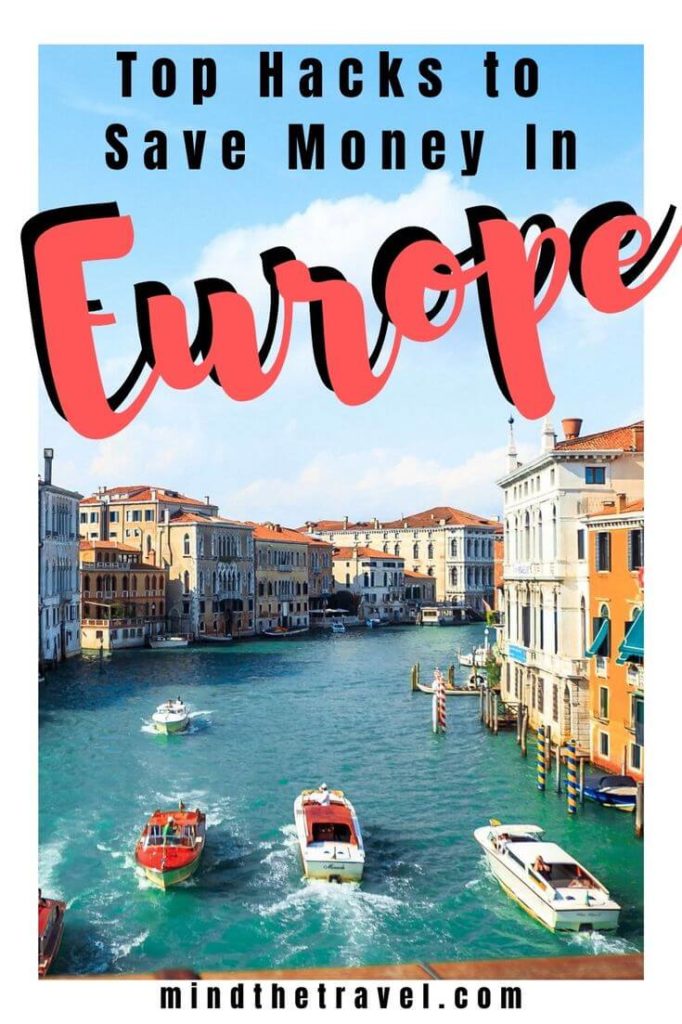
Planning Your Trip to Europe
1. score the cheapest flight.
Chances are airfare is going to be one of your biggest travel expenses. If you want to save money by avoiding travel agencies, your first step is to research your options. Spend some time planning your trip with a site that compiles your choices. Travel search engines compare flight deals available at multiple airline tickets sites, travel agents, and then sort them by price.
I’m a frequent flyer with both domestic and international airlines. In general, Google Flights and Kayak both have a user-friendly interface that allows quickly find budget carriers once in Europe, track prices and see how much you can save by departing a day later or earlier.
Expedia and Skyscanner are good at finding cheap flights to Europe. You can download their apps for searching flights to any destination on any date or even for a whole month from a city. Skyscanner can also find you trains in the UK.
Once in Europe, you can take advantage of the Schengen Agreement that allows you to move freely across most of the continent without the need for a visa. Because of this, flying can be your go-to option if you’re from the United States. Take long- and short-haul flights in Europe to reduce the time you spend traveling and maximize your time.
2. Save Money On Budget Airlines
Budget airlines will easily save you some greenbacks, but with so many out there it is still important to know which one to choose.
Here are the Budget Airlines Serving Europe:
3. avoid unfair exchange rates and hidden fees.
Before you leave, it is important to have a definitive plan for managing your money in Europe. While the exchange rate on ATM withdrawals is almost always better versus what you would pay to an exchange service in the airport (an average difference of between 3-7%), ATM fees are increasingly expensive.
4. Get a European SIM
Obviously, roaming charges and accessing the internet abroad can get ridiculously expensive when using y phone. You should get either an unlocked phone in Europe or own a dual-band GSM phone in order for a European SIM card to work. Check with your carrier before venturing out whether your phone can accept SIM cards from different networks.
Alternatively, if your phone is locked, I suggest getting a mobile WiFi hotspot which costs around €50. In terms of making free phone calls to friends and family – you’ve got iMessage and FaceTime (if you both use Apple phones) or try the WhatsApp (free to download). Skype offers fantastic rates so I highly recommend their audio and video call services. The other app that I find very useful in terms of saving money on your phone bill is Viber which is also free to download.
5. Travel Off-Season
It should come as no surprise that summer in Europe is the high travel season. Firstly, you will come across unreasonable prices, completely booked hotels, crowded museums, and the endless wait time. Secondly, this is the least authentic Europe experience you can possibly have. Why? There will be no locals to mingle with during the summer. They mostly escape the suffocating city heat and flee to beaches and the countryside.
This is particularly true for urban destinations (including Rome , Paris, and Zurich), but also through to smaller towns and countries in Central and Eastern Europe. With higher demand and big-ticket travel expenses like airfare and lodging on the rise, your trip is certainly going to be filled with elbow nudging and toe-tapping as you test your patience.
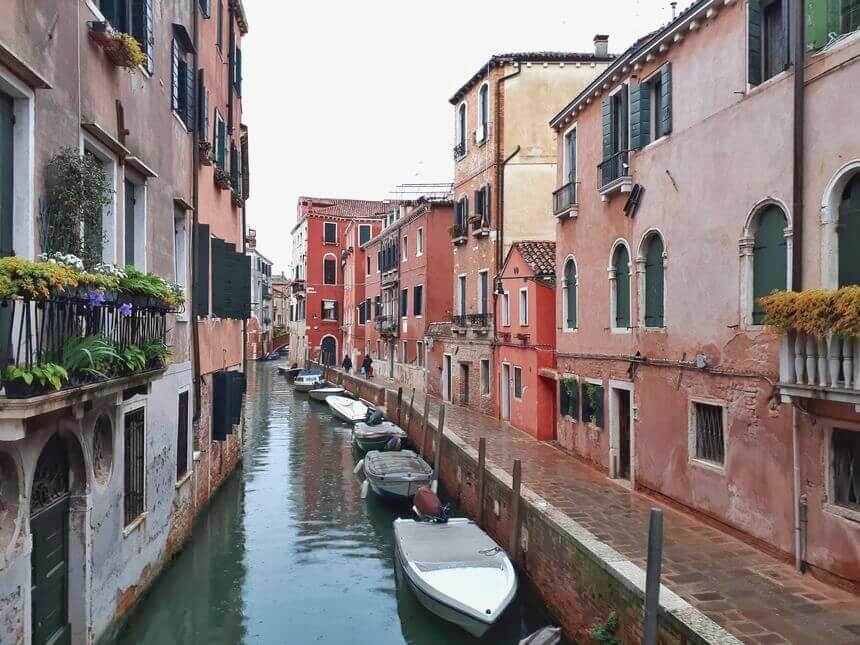
So, when is the best time to go to Europe? In a nutshell, any of the months outside of summer. Just rule them out. If you are still going to visit Europe in summer, wisely choose your next destination if you want to avoid the crowds . Big cities are extremely busy during the summer and early winter. Visit during the shoulder and low seasons and you will be fine. Along with Christmas flights, New Year’s Eve is typically one of the most expensive times of year to visit Europe, which is, of course, true for anywhere in the world.
If your travel dates are flexible, consider traveling during the shoulder seasons or take a vacation in places for which summer is actually off-season.
6. Explore “Free Things to Do in [type your destination].”
About six years ago, I began experimenting with the concept of a cash-free living to travel more frugally. It’s actually a fun challenge – and one that helped me discover a staggering number of free things to do in various cities.
For example, on a given day I wasn’t allowed to spend any money on anything, no matter what. In other words, I had to use public transport instead and could only eat one meal a day, usually dinner, as well as spend money on paid attractions. I was doing my best to tighten my budget and minimize unnecessary spending. Boy, it was hard!
Ok, I’m not telling you to eat just one meal a day, but finding cheap (and free) things to do to dodge boredom can be extremely rewarding both culturally and financially.
7. Focus On a Particular Destination
With so many cool places to visit in Europe, it’s pretty easy to get overwhelmed with the endless possibilities. Berlin, Munich, Paris, Rome, Prague , Amsterdam… the list is sure to be endless. Depending on your interests, it is important to give your trip a focus and stick to popular destinations. Love strong ale and theater? Go to London . History buff or culture junkie? The Eternal City is going to be your next destination. Want to get off the beaten path? Central/Eastern Europe is likely to surprise and delight you.

While there are many alternatives to consider, ranging from where to go in Europe to the sheer number of options and things to see, do, and experience, one thing is for certain: you can’t do it all at once. And even if you can (assuming this is your once in a lifetime journey), you shouldn’t. I would highly recommend exploring Europe on multiple trips at various times in your life – depending on what takes your interest at that given time. Believe me, that it’s true.
Here are a few sample itineraries to get you on your way:
Where to go in europe, 8. london > paris > marseille > genoa > florence > rome.
London is known to be the most visited city in the UK as well as an incredible place to start your Europe adventure. Especially if you are traveling from the United States and looking to save money on flights. If you’re traveling long-haul, carefully select your connection airports and stopover countries to avoid paying huge taxes. From London, you have the choice to either travel by train or air to Paris and make your way down to Marseille, cross the border with Italy, and finally to Rome.
9. Berlin > Dresden > Prague > Vienna > Bratislava > Budapest
If you’d prefer to indulge in beautiful and historic Central European cities, Berlin is a great place to start. With so many low-cost flights from all major European cities, Berlin is probably one of the best value cities to visit in Europe. I recommend you have a peek at my 2-Day Berlin itinerary .
Berlin offers a wide range of excellent value budget accommodation-from apartments to luxury hostels. In terms of free things to do, from visiting Deutsche Guggenheim (free on Mondays) to visiting the Reichstag or simply strolling down the historic Unter den Linden from Brandenburger Tor (Brandenburg Gate) to Museum Island. There is so much you can do in Berlin without spending a dime.
From Berlin, make your way to Dresden, the traditional capital of Saxony, followed by a leisurely train journey through Vienna, Bratislava, and onward to Budapest, Hungary. Visiting these five countries requires at least two weeks if you travel at a slower pace.
10. Moscow > St. Petersburg > Helsinki > Stockholm > Copenhagen
This long itinerary covers the underrated Russian cities of Moscow and St. Petersburg , as well as gives an opportunity to visit some real Northern beauties. Starting in the Russian capital, be sure to spend a few days discovering the city with a very turbulent and diverse past. While Moscow feels like a worldly cosmopolitan city, it retains its historical interior and never fails to impress visitors with its’ Orthodox churches and the grand chambers of underground metro stations. Here’s how to spend one week in Moscow .
End your trip in Copenhagen, the capital of Denmark. This is one of the world’s most eco-friendly cities that boasts gorgeous architecture, remarkable museums and galleries, charming canals, culturally diverse neighborhoods, and a fairytale-like old center with a Tivoli amusement park.
How to Find Good And Cheap Accommodation in Europe
11. use benefits of a sharing economy.
Here’s a confession: I rarely stay in hotels in Europe. They’re often way too pricey for someone traveling around Europe alone and provide very little in the way of actual local flavor. I prefer to stay in a city and live like a local. For me, that usually starts with finding an affordable apartment in the neighborhoods where the locals actually live. Here’s where Airbnb comes in handy.
They have a fabulous range of places to stay and allow you to explore your destination before you even set foot in the city. If you search your area with the map tool, you can easily click and drag the map to move it around. Wherever you stop, their search ranking algorithm will show you the available listings and prices. The listings with the lightning bolt icon mean they don’t require approval from the host and are available for instant booking.
As much as I love staying in hostels, I love to have the comfort and privacy of an apartment, particularly when I am traveling for a few weeks in a row. You can get exceptionally good value for Airbnb in expensive cities like London, Paris, and Rome. If you are new to Airbnb, sign up using this link to get $35 off your first booking.
12. Look For Rentals With the Kitchen
An advantage of a fully equipped kitchen and most Airbnb apartments is that you can cook your own meals without having to eat out for every meal, and paying to eat in your room at an exorbitant markup. Not only does that quickly add up and leave you way over budget, but it also deprives you of one of the most authentic European experiences: grocery shopping!
13. Find the Best Hostels in Europe
Hostels are frugal traveler’s dream and are no longer mean disheveled, smelly holes with no facilities, dirty sheets, and insect infestation. You needn’t be afraid of staying in hostels because they are changing, and there are plenty of hostels in Europe which are cleaner than an average budget hotel! Hostels aren’t just for young backpackers either, I regularly stay in hostels and as a thirty-something solo traveler , I can attest that centrally located hostels in big cities in Europe are perfectly safe.
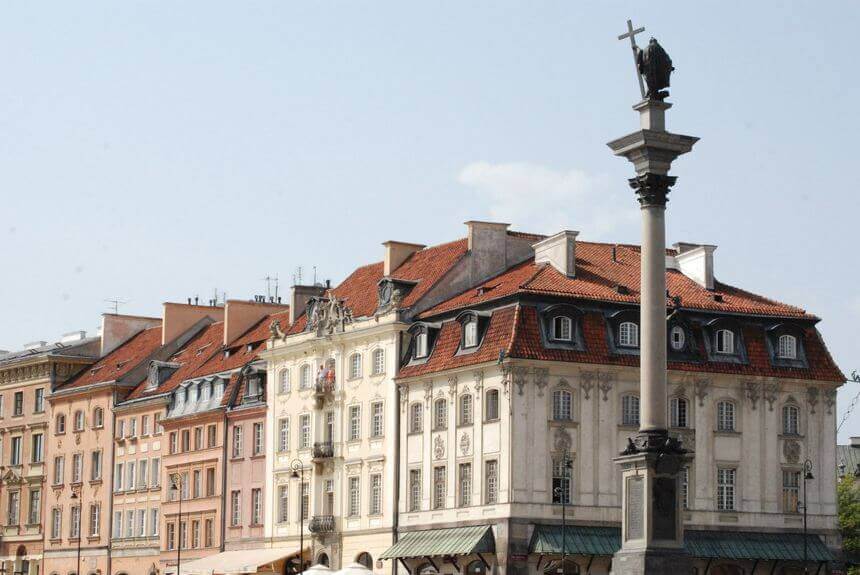
I’ve stayed in literally hundreds of hostel beds in Europe, so now I consider myself somewhat of an expert knowing how to pick a good one. In fact, hostels all over Europe have changed considerably in the past years. They are pretty much everywhere – even in the smallest of towns, there are usually several options to choose from. For finding the best hostels in Europe, I recommend Hostelworld, which has the most comprehensive selection of hostels and other backpacker accommodation to choose from.
14. Try Something Different
While in large cities I have had good experiences with finding cozy little hostels, campgrounds can be a lifesaver in the countryside. Although campgrounds are usually on the outskirts of towns, which makes access difficult, unless you have a car, these offer great value for money at the height of the season. This is a great way to step out of your comfort zone as well!
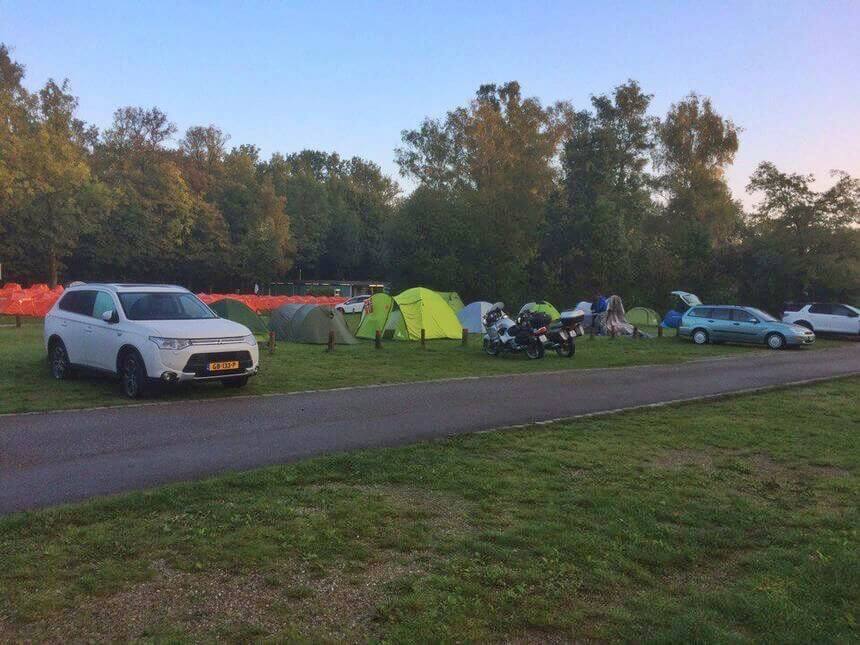
If you travel in the countryside and intend to embrace the slow travel mindset, staying at a farm for a few days or renting a house in rural areas could be your best bet. Farm stays and vacation rentals have become popular lodging options around Europe. They are usually far cheaper than hotels in the long run and allow you to cook in your own kitchen or a common kitchen if you wish so. There is nothing like a sampling of great local foods from a market after many days of eating at restaurants or outdoor cafés.
15. Stick to Family-Run Businesses
When heading South, take advantage of staying in smaller family-run businesses. These are less popular options and range from small family-run hotels to family-owned restaurants and tour operators. If you want the best deal that combines both the price with comfort, stick to family-run businesses that deliver highly personalized service and excellent value for money.
How to Travel on a Budget Across Europe
16. avoid taxis and overspending.
Taxis in Western Europe are expensive and often unnecessary since you can always hop on a bus or take a train that will get you pretty much anywhere. Find out if the airport where you’re landing has a train link or shuttle bus before getting into a taxi. You’ll save significantly. This is also true while traveling within the city limits. At the same time, you’ll find Uber in cities at reasonable rates, so that’s definitely a go-to option.
17. Take Public Transit
Metro systems in European cities are incredibly efficient and go everywhere. No matter where you are, chances are you’re never more than 200 yards from a Metro station.
For example, Berlin’s public transportation is comprehensive and it’s always cheaper than a cab. Oftentimes it takes you over, under and through the city and connects the city center with the outskirts and beyond.
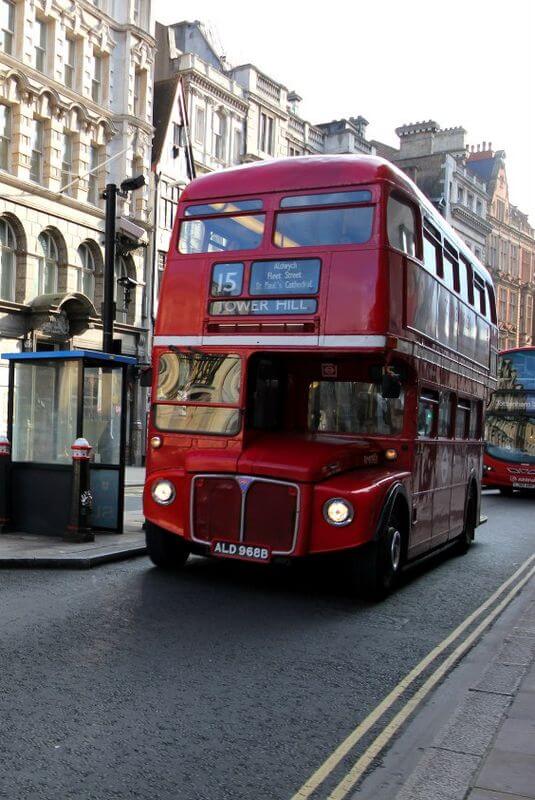
When staying multiple days in a particular city it may be wise to invest in a multi-day pass.
Thus, when visiting London, use an Oyster card as it comes fully charged with credit which you can spend as you travel on the Tube, buses, DLR, Thames Clippers river bus service, London Overground, and most National Rail services in London. Travel passes offer value for money and allow you to drastically save money while traveling in Europe.
18. Walk As Much As You Possibly Can
You’re in Europe, pal! You MUST explore these windy narrow streets, cobbled alleyways, and spectacular Medieval castles, in which you’re eating, sleeping, and shopping. Stay central and save yourself loads of money by reducing the time you spend commuting each day.
Oh, and you avoid a cab ride on your way back, of course.
19. Travel Through Europe by Bike
Exploring Europe on two wheels is something I can’t recommend highly enough. With so many cycle routes (like the Danube Bike Path and Dieppe–Paris cycle route), bike shops, and cozy little towns, Europe is a great place to start your own Tour de France. In addition, you can sign up for the Warmshowers website – a community of individuals who are passionate about cycling and lovely locals who are willing to accommodate them. Win-win!
If you’re not into exploring rural Europe, why not taking advantage of renting a bike that allows you to get around the city quickly. You can expect to pay around €20-25 euros per day, but if you rent a bike for a week, prices will be much lower.
20. Take the Train
Train travel is surprisingly easy, quick, and comfortable to get around Europe. If you can plan your Euro trip ahead of time and spend some time researching your destination’s rail options, there are some great savings to be made from booking train fares.
Plan your rail trip in Europe using the Deutsche Bahn website and also check out the Voyages SNCF. For example, you can go from Würzburg to Berchtesgaden for €29 currently, Frankfurt to Amsterdam or Paris in less than 4 hours from just €35 or from Copenhagen to Hamburg in 4.5 hours starting at only €27.
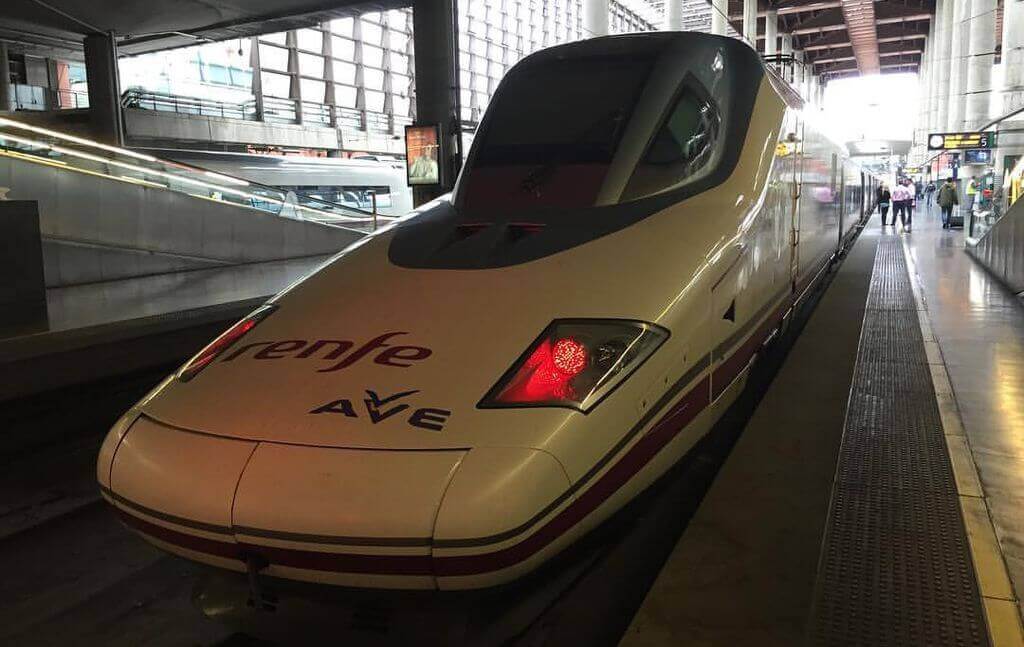
If you’re planning a multi-country travel itinerary consider buying a Eurail Pass before you leave. This is the most cost-effective and flexible option and it is great if you will be visiting many different places. Just make sure to buy it well in advance, so you have time to receive the pass in the mail.
Another option for traveling Europe by train is to catch a train to a border city and switch train services when you crossing the border. Traveling in a neighboring country will generally be more expensive if you buy one ticket instead of two separate tickets.
21. Find a Rideshare or Offer Rides
For those not yet in the know, rideshare is one of the most effective ways to travel both short and long-distance for less. You’ll find a fleet of car-pooling companies across Europe that caters to frugal travelers and allow you to save money by spending only on the cost of travel. That said, you can easily find a ride that’s considerably cheaper than a bus or train ticket.
Similar to Airbnb where you can rent locals houses and apartments, BlaBlaCar and Carpooling allow you to reduce transport costs by sharing rides with others in their own private vehicles. Also, many drivers use BlaBlaCar and Carpooling to give up free space in their car in exchange for help with the cost of gas, making it a great eco-friendly way to travel.
Ridesharing is an excellent resource for all budget travelers out there.
22. Consider Buying an All-Inclusive City Pass
In many European cities such as Paris, London, Rome, Vienna, Prague, Berlin, Barcelona, Marseille, etc, you can get an all-inclusive city pass. It usually lets you visit a number of attractions for free and/or use the transit system for a fixed number of days.
Some city passes come with additional benefits and perks that often include a free hop-on hop-off bus tour of the city, a free riverboat cruise, discounts on tours and restaurants.
These passes make the most financial sense in cities that aren’t very compact or pedestrian-friendly, where you’d otherwise be spending a lot of money on public transportation each day to get around.
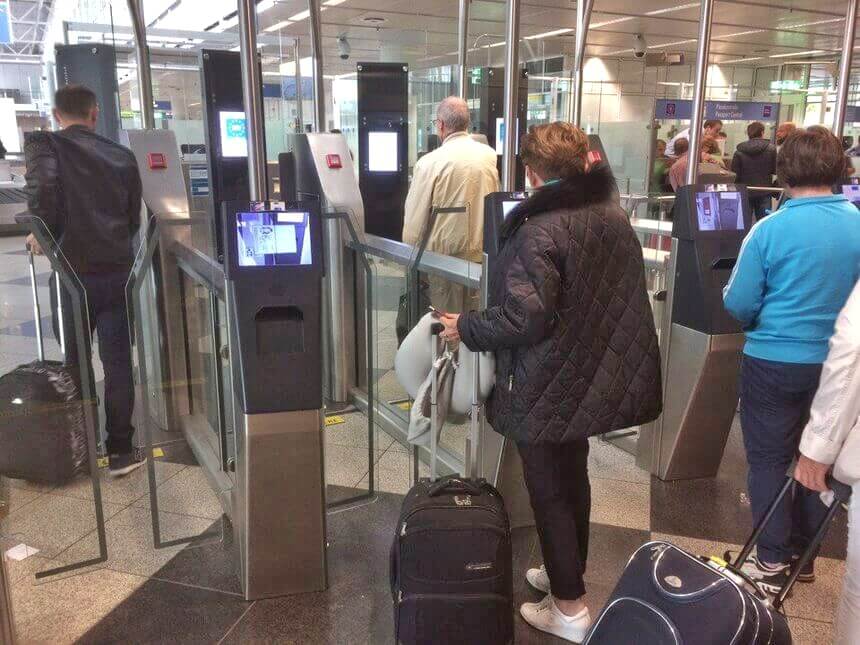
Read Next: Lessons I’ve Learned From Traveling
The other criterion for these passes to make sense financially is if you had already planned on doing a lot of intensive sightseeing or “cramming” within a short period of time. Some passes only work out cheaper if you visit at least 5 different sights each day.
If you had originally planned on taking things more slowly and then decide to buy a pass, you will feel compelled to rush around sightseeing at an unnatural pace to get your money’s worth from the pass.
One of the less obvious benefits of these passes is their ability to save you precious time and improve your productivity, by allowing you to bypass long queues at ticket counters.
Passes can usually be purchased at airports, online at their official websites, or at other locations around the city.
The validity period of a pass may vary but it’s common to get 2-day, 3-day, and 5-day passes. After the last day, the pass will expire and become useless. This, of course, puts pressure on travelers to cram as much as possible. Discounted passes may also be available for youngsters and kids.
How to Eat On a Budget in Europe
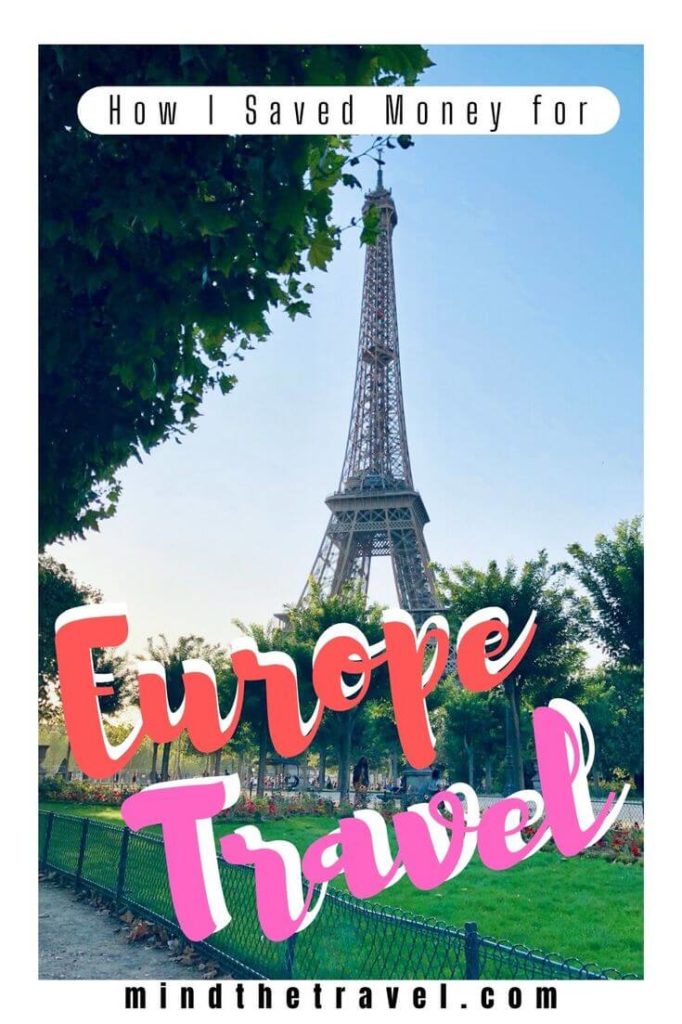
23. Buy Your Groceries European-Style
To avoid outrageous restaurant overcharges, visit a local grocery store and put together a meal. Shopping for food that’s good for your wallet at supermarkets, small groceries, and farmers’ markets, will save you a good deal of money on food while traveling in Europe. Melted cheese, sliced fresh tomatoes with oregano, lettuce leaves, roast beef on fresh bread make for a wholly filling sandwich that will set you back just a few euros.
In many grocery stores in Europe (especially in Scandinavia) you’ll not only find ready-to-eat sandwiches and salads but complete entrées that can be heated up in the oven (if your accommodation has one) or sometimes served hot in-store. Grocery stores in Brussels and Stockholm, among others, offer substantial, cheap and delicious prepared meals.
24. Hit the Local Food Markets
Pretty much all cities and even small villages have one or more food markets where you can buy fresh fruits, vegetables, cheese, meat, and fish. The permanent markets, operating year-round at the same location typically have small eateries that serve authentic local and regional specialties for a fraction of the price of a restaurant. On any day you’ll always find the best selection early in the morning, just after the market opens. However, some markets keep late hours.
For example, in Paris, where the food culture is particularly important, most Parisians shop for fresh ingredients daily. There are Marché des Enfants Rouges, Marché d’Aligre, Rue Montorgueil, and Marché Bastille to name a few. I saved a lot of euros buying fruits, cheese, and olives at Marché Barbès in the 18th arrondissement. Ask the hostel/apartment owner or reception staff where they shop because they know where the bargains are.
25. Look for Set Meals (menu of the day)
Save up to 50% on food by finding restaurants that offer midday set meals. These usually include two or three courses followed by a dessert and coffee. Keep in mind, during the lunchtime menus are always cheaper. You can choose from a fixed-price menu, or the menu of the day – menu del día (Spain), plat du jour (France), menu fisso (Italy).
26. Find Out Where Students Eat
Benefit from a thriving student scene in Leuven, Paris, Bologna, Prague, London, as well as in many other European cities by eating at cheap eateries and cafés catering to students. No matter what kind of food and drink you’ve got an appetite for, you’ll find something to your liking in student cities in Europe. Do a little research before traveling to Europe and find the best value meal deals. Don’t forget your ISIC card if you are still a student to get some extra discounts.

27. Make Sure you Know How Much To Tip in Europe
While tipping etiquette across Europe can vary from one country to another, you should definitely know the basics, especially if you’re from the United States. The reason is that my American readers are used to automatically tipping 15 – 20 percent in restaurants. In fact, restaurant staff does not expect this much in most European cities.
To make things clear, in France, for example, rounding up the bill to the nearest euro or adding one euro on top of the bill is considered sufficient. Tipping by credit card is considered somewhat undesirable because it’s unlikely that your waiter will see any of it. Instead, prepare a few small bills in the local currency and leave it on the table or hand a tip directly to a waiter after your bill has been settled.
28. Have a Picnic in the park
This is one of my favorite money-saving tips for making any trip to Europe more affordable. And come on, who doesn’t love a picnic on a nice summer day? Grab some crusty baguettes, cheese, fruits, and some cold cuts, take in the action and just delight in how differently people live their lives in other countries.
Great spots are in front of famous landmarks, nice shady parks, beaches or along the river banks. My Paris picnic backdrops tended to the Champ de Mars and the imposing Eiffel Tower. You can make these as simple or as full-on as you like. Check the laws & regulations about alcohol use and maybe you can include a bottle of wine or some beers.
29. Utilize the Tap Water
Pretty much everywhere in Western and Central Europe, the tap water is drinkable. So save yourself some money, and save Earth from plastic pollution, by taking a reusable water bottle traveling with you.
Most people in Austria, France, and Switzerland receive good quality drinking water that is safe to drink. Furthermore, Italy, Germany , and Belgium have public taps where you can refill your bottle for free. Also, you can ask for tap water in restaurants. If you didn’t specifically ask for it, waiters will always bring you an expensive bottle of water.
What is the Cheapest Way to Travel in Europe
How to save time and hassle of queuing and skip the line for popular European attractions? In a nutshell, it is always wise to book tours and activities in Europe ahead of your arrival. Too many travelers wait until they’ve left home to make reservations, only to find that tours are sold out.
There are several options when it comes to building a trip and planning activities. Firstly, it is free walking tours available in most cities across Europe. Many of Europe’s guided walking tours are comprehensive and you can tip the guide if you enjoyed the tour.
Secondly, if you seek to create specific experiences, I recommend booking your tours via Get Your Guide . By booking in advance you can save time and enjoy skip-the-line access to Europe’s most popular attractions like the Eiffel Tower in Paris or the London Eye . A little bit of advance planning can go a long way!
All major cities in Europe offer free walking tours that do usually offer phenomenal value for money and are a great introduction to a city. It’s an excellent way to discover a place with someone who knows every nook and cranny of the city. Although I had a not-so-nice experience with the one in Bordeaux, I still recommend you to take one, just to have the first impression of the city you’re in.
30. Visit the Tourist Information Point
Besides providing free information and advice, tourist offices in Europe often have city guides full of coupons for discounts to sights, tours, restaurants, museums and more. They often sell city or transit passes too.
31. Find Free Wi-Fi Hotspots
When I venture out to explore new cities I love staying online to share travel experience on social media. Facebook , Twitter , and Instagram help billions of people worldwide stay connected so I think you won’t want to put on hold this part of your life while traveling in Europe. Today, there is a Wi-Fi connection almost everywhere… and best of all, it won’t cost you anything!
Whether you run to the closest McDonalds or Starbucks, or simply connect to a public WiFi network (more and more cities are offering free wi-fi), there are plenty of options to choose from.
32. Do As the Locals Do
Join locals in your destination area for scoring the best and the most affordable, from food to attractions to activities. Venture out in the search for new experiences and interact with anyone from hotel staff to taxi drivers to helpful strangers you meet on the way to get an awesome insight into where to stay, free things to do and more!
If you have local friends, ask them for their recommendations. Don’t just head to fancy places in the city center unless you want to quickly drain your wallet! If you have no friends or you don’t want to ask anybody, search on the web and search for personal travel blogs for information.
And the last advice. Observe! When strolling the streets, if you see any restaurant just observe if there are more tourists than locals or vice versa. That way, I scored a local restaurant in Tuscany, Lucca (Italy) where I was the only tourist dining there that evening among the locals! Their menu was not in English even!
33. Find Free Things to Do in Europe
The best way to save money in Europe is to find things that you don’t have to spend a dime for. Just like everywhere else in the world, there are plenty of activities in Europe that are entirely no-cost, no matter where you go.
It requires some homework before leaving for Europe. Simply Google your city, flip through a local travel guide, or just search Quora topics. You’ll learn about festivals, popular attractions, local culture, shows, free museum days, etc. You’ll get to enjoy something that you might not have done otherwise, without spending any money.
Now that you how to stretch your dollar, it’s time to pack your bags. Bookmark these tips and you’ll be able to save while you travel in Europe. It’s your turn now. How do you cut costs when traveling in Europe?
You may notice that there are some affiliate links within the blog post. If you click on one of them, I may receive a small commission, at no extra cost to you.
PIN IT FOR LATER!

JOIN THE FREE WEEKLY NEWSLETTER!
Email Address *
YOU WILL ALSO LIKE

How to plan the Perfect Day Trip from Venice to Burano Island
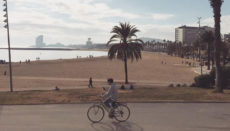
Best Things To Do in Barcelona Spain

Things To Do in Seville
50 comments.
You have some great money saving ideas here. Thanks for a great read.
MindTheTravel
Hey, Karen! Thank you for stopping by!
Collins Nwokolo
Nice one! I’m planning on a trip this May, so this post was very useful to me.
Thanks for your kind words!
Socialoutwork
Awesome! money saving ideas here. Thanks for sharing it.
Great tips, saving money while travel can help you see more at same price. I used free walking tours while I was in Krakow and I loved it.
Oh, I love Krakow. I had only one day for sightseeing there but since then St. Mary’s Basilica is my favorite landmark!
Great advice! I’ve always dreamed of visiting Europe but the cost usually deters me!
Katie Sephton
Some great money saving tips here. I will do a huge Europe trip in the summer so this article as certainly given me food for thought. I’m sure by following these tips i will save a ton. Thanks
Depending on the country (or maybe countries 🙂 ) Europe can be done on the cheap. What destinations are on your radar?
Bryan Carey
Good money saving tips. I know that European travel during the off- season can make a big difference. The cooler temps might not be as pleasant, but it will cut the costs. I noticed that, starting in April each year is approx. when the prices jump higher. A late March vacation can therefore result in low prices and slightly more tolerable temps.
I love Europe and can’t wait to go back. You gave some great ideas on how to save money

Cynthia Mackintosh
We were in Paris (family of 4) and eating out was EXTREMELY expensive. It was one of our highest expenses! So, you’re correct that it is pricey. I love your tip about sleeping at the airport when running out of money. However, we have a timeshare and can book anywhere in the world which helps a lot! Great tips!
These are great trips. I learned new ones and realized I have been doing others. The one about planning your food is a must! This does not mean you can’t buy that amazing pastry you saw on a storefront, but with lunches and dinners is critical. I tend to have on my phone and in a paper the names and addresses of places that I have looked over in advance, to avoid surprises regarding the type of food and price. There’s nothing worse than getting hungry, finding the closest place to eat and be extremely disappointed.
Thanks, Sheila!
With so many delicious food out there, satisfying your sweet tooth does not seem difficult. In fact, finding these cheap places to eat usually takes most of my pre-planning time. But this hard work totally worth the effort.
Sharon @ What the Fork Food Blog
I’d love to travel to Europe. I’m definitely saving this guide!
Great tips. I’m an American who has lived in Europe. My biggest penny pinching strategy was to walk wherever I could. It’s a great way to really see a place and understand how neighborhoods knit together.
Hey, Karen! Have you ever tried walking tours? These come virtually for free but provide you with tons of information! As a historian, I find them quite entertaining.
These are really good tips! I haven’t traveled to Europe just yet so I’m sure these will be really useful in making it an affordable option.
Thank you so much for the great tips. I’ll definitely come by again when it gets closer to planning the Europe trip. I’m so glad I got a chance to read you blog.
Thank you for your kind words, Elle!
Backpacking across Europe has been a dream for me. I have always wanted to explore the countryside but the budget always stops me. This is a great post and will travelers like me a lot.
This probably helps a lot when in Europe! Thanks
Handy tips on how to save money while traveling in Europe. Interesting post I enjoyed thoroughly. I have traveled lot in Europe but it will be fun to try some money saving tips.
Neil Alvin Nicerio
Great tips! I will surely keep these in mind when I visit Europe. I have to save a lot of money first though. Anyway thank you for sharing this great article.
You have some great money saving advice in this post. Europe indeed can be very expensive if you don’t pay attention. Sure, everyone dreams of visiting Paris or London but they are so expensive, a day in each capital could end up costing as much as a week in an Eastern Europe city.
Great tips. The last time I went to Europe was on a bus tour, so a lot of the stuff were included. I would love use the EuroRail pass the next time I go. Good tip on cooking your own food too.
Wow! I love Europe. Will definitely keep your advice in mind. Thanks 🙂
This is a wonderful article! We are currently planning long-term travel and this is very helpful. Thank you for you insights!
The traveller
Some very useful tips must say. Keep up the good work.
Su {Ethan & Evelyn}
I’ve just written about wanting to go to Barcelona soon, so this will be very helpful. Thank you! 🙂
These are such great ideas. Totally agree with Oyster cards and food markets! I did the same. Love Couchsurfing too for cheap places to stay and meet locals. xoxo Annie
These are great tips. Super helpful
Daima Hussain
Very thorough article with great advice. Kudos.
Starry Eyed
Lots of very useful information, something that helps a lot to think about for my next trip!
I love this post! Europe is totally expensive, for sure, but I feel like a lot of people tend to think that it’s FAR more expensive because they make it out to be that way, like staying at hotels, taking taxis everywhere, and going out to eat for every meal. I love all of your examples, proving that it isn’t that expensive!
Alexander Popkov
Good recommendations list. I travel Europe a lot and agree on the things you tell.
Some fabulous tips there for saving cash in Europe. I moved to the Middle East 3 years ago so most of my travel is now in Asia or Africa which s super cheap. Should I decide to do the rounds in Europe, I will refere back to this article!
Awesome tips! Free walking tours are great and so is staying outside the biggest cities. Also, if you stay in places like Paris – choose accommodation couple miles from the downtown. Thank you for sharing the tips!
Amy clements
Great post! Pinned for future use 🙂
One day I need to go to Europe, it looks so beautiful and the food looks delicious.
Sonja of Montecristo Travels
We travel with our tiny dog so some of these are not an option for us (like the cheap airlines – they don’t allow in cabin pets!) but like you we totally do the cook your own food thing… THAT is a huge game changer. if we do eat out it’s lunch. Never breakfast and dinner. Those are always overpriced. I have slept in an airport to save a hotel night. Even with the tiny puppers along. It’s all in how you present yourself for that one. But as I get older — I just don’t fancy it anymore.
Great piece if advises – I am Airbnb host myself and love this community not only for saving and making some pocket money but also as option to meet cool people!
Pingback: 20 Comprehensive Ways to Save Money For Travel - Wellington World Travels
Marjut | The Smooth Escape
So many good tips! Staying in Airbnbs instead of hotels and cooking your own meals instead of eating out have been some of the biggest game-changers for me when travelling.
It always amazes me how much I walk while in Europe compared to my own country! Wonderful tips! Definitely a few I will use in the future!
Charles McCool
Wonderful tips. I guess you will have to update this as necessary. I know at least one carrier has already stopped flying in March.
You brought to mind some simple ideas that I don’t think I would’ve thought of. Thanks for sharing (:
Very useful and thorough tips! Thanks for sharing
Sheriden Stokes
Great tips! I’ve travelled further places such as Asia but haven’t got around to Europe as much yet, even though its on my doorstep – so this is very helpful! Thank you X
Save my name, email, and website in this browser for the next time I comment.

- Privacy Overview
- Strictly Necessary Cookies
My website uses cookies so that I can provide you with the best user experience possible. Cookie information is stored in your browser and performs functions such as recognising you when you return to my website and helping me to understand which sections of Mind The Travel you find most interesting and useful.
You can adjust all of your cookie settings by navigating the tabs on the left hand side.
Strictly Necessary Cookie should be enabled at all times so that I can save your preferences for cookie settings.
If you disable this cookie, I will not be able to save your preferences. This means that every time you visit my website you will need to enable or disable cookies again.
11 tips for traveling Europe on a budget

Traveling Europe — in Normal Times — can be an expensive splurge or an affordable adventure depending on where you go, how you plan to arrive and what you plan to do at your destination. Although the continent seems small, a quick hop to Ireland is a world away from a five-hour flight to the Canary Islands or an Interrail adventure to the Swiss Alps. With so many diverse countries to choose from, it can often be overwhelming to plan a trip -- especially if you're tight on funds. But if you follow the below tips, you can have a fantastic vacation that won't blow your budget.

1. Get creative with points and miles
Having a stash of points and miles is great, but if you don't really know how to use them , they won't get you very far. So get creative with your points and miles and remember to think outside the box when using them.
For example, if you can't find award availability on British Airways using your Avios, you can transfer them to Iberia or Aer Lingus for a whole slew of other redemption options.
Remember that partner airlines are always an opportunity and that your credit card points are transferrable to airlines that maybe aren't as common. For example, American Express Membership Rewards points transfer to airlines like Aer Lingus and Air France-KLM.
Read more: The ultimate guide to Amex Membership Rewards
2. Fly low-cost
With many spots in Europe just two-hours or less away by plane, flying a low-cost carrier isn't so bad -- as long as you know the rules. Remember that you'll be charged extra for pretty much everything, so plan ahead if you want to check a bag, board first or reserve your seat. If you are country hopping, consider choosing a home base and planning weekend trips so you don't have to check all your luggage. And when you snag a deal for $50, $25 or even$10, just grab your under-the-seat backpack and go -- you won't regret it.

3. Travel in the off-season
Traveling in off-season or shoulder-season will save you money on flights, hotels and award redemptions. Plus, you'll deal with fewer crowds and avoid long lines, especially when visiting major tourist attractions.
Flights and hotels may offer cash deals in the off-season and remember that most airlines have peak and off-peak calendars when it comes to award redemptions, charging fewer miles/points during off-peak dates.
And consider that some hotel loyalty programs, such as Bonvoy, now have both peak and off-peak points redemptions , so if you choose to redeem during off-peak dates, your points will extend even further.
Generally speaking, most European countries' off/shoulder-seasons are October to November and January to June. Of course, avoiding major celebrations like Christmas and Easter, as well as busy bank holiday weekends, will also ensure you get the best rates.
4. Visit affordable destinations
Visiting Paris and Amsterdam (even if you do get an affordable flight deal and are able to use points for a hotel stay) won't run cheap. Instead, consider some cheaper cities in Europe, such as Krakow, Porto, Bucharest, Kiev, Budapest and beyond. A good rule of thumb is to decide what type of vacation you hope to have and then look for alternative options.

For lazy beach days, skip the French Riviera and head to Sicily or the Albanian Riviera instead. Ditch Santorini for a lesser-visited Greek Island like Paxos, Sifnos or Symi. Wine taste in Estonia, not Bordeaux, admire art in Madrid, not Vienna, or ski in Spain's Sierra Nevada instead of the Swiss Alps. Whatever style of European vacation you'd like to have, you can do on a budget -- just pull out a map and think outside of the traditional hotspots.
Read more : Long layover in Madrid? Here's all you need to know
5. Stay in a home rental or hostel
Home rentals can actually save travelers a lot of money -- and not just on the actual rate of the rental, but also on dining out or doing laundry . Since home rentals often come with amenities like a full kitchen or washing machine, you can cook your meals and wash your clothes at home, which is a huge money saver -- especially for a lengthy stay. And living like a local has cultural benefits, too, like getting a real feel for a city and how its residents go about their daily routines.

Hostels are another cost-effective alternative to hotels. And it's not what you think: these types of lodgings aren't all bunk beds and backpackers. In fact, many European hostels come with private bathrooms and bedrooms, more like small hotels than anything else. Plus, Europe is seeing an uptick of trendy boutique hostels such as the Generator brand, meaning you can still have a comfortable accommodation experience while not overspending.
6. Use the right card for purchases abroad
Unfortunately, some points-earning credit cards charge a foreign transaction fee (about 3%). However, depending on the value of the points you can earn, you may (or may not) come out on top when using it abroad. To find out, check out the TPG's monthly points valuations to see how valuable certain point currencies are.
While we almost never recommend using a debit card, but it may make sense in many instances when spending abroad. For the best cards to use, check out this guide on best cards to use abroad .
7. Know the tipping rules
Whether it's 10% or nothing at all, understanding the tipping culture can help you avoid a faux pas post-meal or after a taxi ride, as well as ensuring you don't spend money unnecessarily. Apps like Gratitude Tipping can help, showing you the rules by country for tipping drivers, guides, restaurant waiting staff, bartenders and hotel staff.
8. Don't discount trains
Although trains aren't always super cheap, sometimes they can be affordable and easy -- especially when booked in advance. Trains will help you avoid airport delays, turbulence and are generally more comfortable than a teeny airplane seat. If you need to travel with a lot of baggage or extras, trains can also be an ideal choice. And some European train journeys are incredibly scenic, making the train ride a vacation in itself. For those heading off on a backpacking adventure, Interrail passes are a valid option.

9. Travel light
Almost all European airlines charge for checked baggage -- and many taxi drivers around Europe will also add on fees for luggage, too. You can avoid this by packing light and right, using things like packing cubes or wearing travel clothing .
10. Do a free walking tour
Most European cities offer free walking tours. Check online before traveling, sign up in advance if necessary and enjoy your free tour. Although tipping is suggested, it's likely you'll still spend a lot less, even after generously tipping your guide. You may also meet other like-minded travelers, which can be welcome if you're traveling alone or looking to make new friends.

11. Check on your mobile data
While some mobile networks offer free roaming in Europe, it's a good idea to confirm to ensure you won't see any added roaming charges. There's nothing worse than receiving a hefty mobile bill upon return when you're already dealing with post-vacation blues. If your network doesn't offer free-roaming, see how much roaming rates cost before traveling, or consider buying a local SIM card upon arrival to your destination.

- Step-By-Step Guide
- Google Flights Guide
- Momondo Guide
- Online Travel Agency Guide
- Southwest Airlines Guide
- Airline Seating Guide
- Train Travel
- Ferry Travel
- Blablacar Guide
- Poparide Guide
- Hitchhiking
- Car Rental Guide
- Ride-Hailing Guide
- Public Transport Guide
- Booking Your Accommodation
- Airbnb & Vrbo Guide
- Hostel Guide
- Couchsurfing Guide
- Coronavirus Travel
- Proof of Onward Travel
- Dual Passport Travel
- Travel Insurance
- Advanced Travel Safety
- Female Traveler Safety
- Best Travel Debit Cards
- Best Travel Credit Cards
- Getting Cash
- Travel-Ready Phones
- Prepaid SIM Cards
- Top Travel Apps
- Packing Guide
- Group Tours
- North America
- Southeast Asia
- Central & South America
- Middle East & North Africa
- Australia & Oceania
- Sub-Saharan Africa
- South & Central Asia
- Cheapest Destinations
- Split-Ticketing
- One-Way Return Tickets
- Hidden-City Ticketing
- More Strategies
- Budget Airline Guide
- Cheap Transportation Guide
- Cheap Accommodation Guide
- Top Budget Travel Tips
- Travel Blog
The Ultimate Guide To Getting Cash While Traveling

No matter where you travel in the world, you will most likely be paying for something with cash at some point. Therefore, it’s very important to know how to get cash when you’re abroad, especially when the place you’re going to uses a different currency to yours.
There are a few different ways you can do it, but some ways are better than others and you need to know the tricks to avoid paying extra fees that you really don’t need to pay for.
A lot of people think that exchanging cash at foreign exchange offices, whether at home or abroad, is the best or even only way to get cash, but it is actually one of the worst ways.
The actual best strategy is to wait until you are in your destination and take out cash using local ATMs. This is because foreign exchange offices usually either have bad exchange rates or charge a high commission (it’s how they make their money, after all).
On this page, I will show you everything you need to know about getting cash while traveling and how to avoid paying for unnecessary fees.
*The following information mainly applies when you’re traveling to countries with different currencies.
1. Have a no-fee debit card
To get cash from any ATM, you will need a debit card. Having the right debit card for foreign ATM withdrawals is extremely important as it can saving hundreds or even thousands of dollars a year on fees that you don’t need to pay!
Some of the things you should look for in a debit card for foreign ATM withdrawals while traveling include a chip & 4-digit number PIN and low or no foreign conversion fees & foreign ATM withdrawal fees.
If your current bank offers a card like this for you, then great! But unfortunately, most banks don’t so you might have to look for a different one.
I wrote a whole guide on the best debit cards you can get for traveling, including which banks offer them, which you can find here: Guide to the Best Debit Cards for Traveling .
2. Use ATMs to take out cash
The first thing you should do when you arrive in your destination is to take out some cash from an ATM because, unlike foreign exchange offices, the only fee they can charge you is a usage fee if you know how to avoid the others.
And sometimes you can even avoid the usage fee if you’re lucky to find a partner ATM or a no-fee one!
Plan out your withdrawals and avoid taking out more cash than you will need (unless ATMs charge flat usage fees, in which case limiting the amount of times you use them is better than using them often).
The ATM will be your best friend as you travel. However, foreign ATMs have sneaky ways of taking your money.
Apart from the obvious way of charging you for using the ATM in the first place, they also take money from you by confusing you with different currencies and using a terrible exchange rate when you let them do the currency conversion during withdrawals.
How do you avoid all of this? There are a few ways…
3. Avoid ATM Usage Fees
While banks themselves will charge you for foreign ATM withdrawals if you don’t have a good debit card, the ATMs themselves will also charge you a fee if they don’t belong to your bank or their partner network. The fee can range anywhere from a flat fee of $1-$10 to a percentage of your total withdrawal amount (usually between 2-5%).
To avoid paying for these fees, you should do your research ahead of time and find out which ATMs you will be able to withdraw money from for free, either because they are part of your bank’s partner network or because the ATM owner hasn’t imposed any such fees. If you’re lucky, you’ll find an ATM that will let you withdraw cash for free.
However, most of the time you won’t be so lucky and you won’t be able to find any free ATMs. In this case, you’ll have to figure out which ATMs charge the lowest fees. There is no easy way to do this unfortunately and every way you do it will take a little effort.
One way is to spend some time searching online on internet forums or blog posts for information about the types of fees that each of the major banks in a country charges, but you won’t always get the most accurate information this way.
The only other way to do it is to test the ATMs of all the major banks in that country once you arrive and note down the fee that each bank charges. Just put your card in, go through the withdrawal process, and when the ATM tells you how much the fee is, write it down and press cancel to avoid getting charged. Compare all the banks and ATMs to figure out which ones have the lowest fees.
Once you know what the fees are, you’ll know which ATMs to avoid and which to look for. If one ATM charges a flat fee and another charges a percentage fee, the best way to proceed is to use the flat-fee ATMs for large withdrawals and the percentage-fee ATMs for small ones.
You may have to do a bit of math to figure out when the fee will be smaller if using a percentage-fee ATM, but it’s worth it if you’re serious about saving money.
4. Make sure you know the exchange rate
You should always do your research and know what the exchange rate to your home currency is before you arrive at your destination so you are prepared and you don’t get confused by all the different numbers.
This is because when you are withdrawing cash from ATMs, some of them will have default withdrawal options that are way higher than what you need and if you don’t know what the exchange rate is, you may end up taking out more money than you expected.
This happened to me the first time I visited Budapest, Hungary. I arrived at the airport and went to take out cash from an ATM. I naively assumed that the default options displayed to me were equivalent to the same options I get from my bank’s ATMs at home ($20, $40, $60, $80, $100, etc) and I didn’t have internet to check what the exchange rate was so I naively trusted the ATM and selected the middle option which was 150,000 HUF.
This ended up being $500 instead of the $50 I was expecting. I only realized my mistake when all the bills started coming out. I only spent 2 days in Hungary so I was forced to exchange most of that before I continued onto my next destination.
Lesson learned: always know what the exchange rate is and select “enter amount” if the ATM doesn’t give you any reasonable options to choose from.
It also helps to have a currency conversion app on a travel-ready phone with a local prepaid SIM card that you can use to tell you the exchange rate in real-time if you didn’t do my research beforehand. There is also a currency converter in each Destination Guide .
5. Never let the ATM do the conversion for you
ATMs make a lot of money on travelers that assume that the exchange rate that is offered by them is the official one and not simply one that the ATM owner can make up.
The truth is that when you are asked if you accept the exchange rate that an ATM gives you, 99% of the time it is way worse than what you would get if you let your bank do the conversion for you instead, even if you have a debit card with a foreign currency conversion fee.
To avoid getting ripped off by the ATM, you should always choose to withdraw money in the local currency and not in your home currency because your bank will always have a better exchange rate than foreign ATMs. ATMs have different ways of hiding their bad exchange rates so you have to pay extra attention when making a withdrawal.
Some of the ways they word it (and the one you should select in bold ) include:
- “Continue with conversion” or “Continue without conversion”
- “Debit in your home currency” or “Debit in the local currency”
- “Let us convert the money for you — yes or no ”
- “Confirm an exchange rate — yes or no ”
- And many others… Always pay attention and be aware!
6. Exchange money at currency exchange booths as a last resort
I personally rarely exchange money at these types of booths because most of them use bad exchange rates or charge high commission that should really not be legal.
However, there may be times when you have no other option, either because there is no ATM nearby or because you have a lot of cash left in one currency that you need to get rid of anyways. Therefore, it helps to know how to get the best deal when using them.
Here are some tips:
- Avoid currency exchange booths in airports, train/bus stations, and touristy areas. They will have higher fees due to the higher traffic and prime real-estate.
- Avoid places that charge commission as it means they take money from you twice: once on the exchange rate and once on the commission.
- If you are trying to get the local currency, look at the “We Buy” rates and find the currency you’re trying to exchange for it. That will be the rate you will get. If you are trying to exchange the local currency that you have for another one, look for the currency you want in the “We Sell” rates.
- Avoid places that have a difference between buying and selling rates of more than 10% as it means they are really ripping you off.
- Compare multiple places, don’t just go for the first one you see. Pick the one that has the best rates.
- Try to negotiate. Show them what the actual exchange rate is with your phone and see if they’re willing to give you a better rate.
And that’s all you need to know!
Nobody likes to pay more than they need to for anything and the more we can save on unnecessary fees, the more we can use to spend on our trips! It’s good to be aware of the different types of ways that foreign ATMs and currency exchange booths can squeeze extra money out of you so that you can be prepared to avoid them.
If this guide helped you out, let me know in the comments below. And if you want to learn about which travel accessories you should get for your trip, check out my Guide to the Top Travel Accessories .

About The Author
Hi there, I’m Sebastian , founder and creator of Travel Done Simple. Since I turned 20, I have lived in 5 different countries and traveled to over 40 others! You can learn more about me on my About page and find me on social media.
Hi there, I’m Sebastian , founder and creator of Travel Done Simple. Since I turned 20, I have lived in 5 different countries and traveled to over 40 others! You can learn more about me on my About page and find me on social media.
I’m Sebastian , the founder and creator of Travel Done Simple! I was born in Europe and raised in Canada, but I now consider myself to be a citizen of the world. When I’m not busy exploring new destinations, I’m here giving you the best travel tips so you can do the same!
You can learn more about me on my About page and if it’s your first time on my site, start here !
Find Whatever You Need
Latest travel blog posts.

The Best Balkan Trip Itinerary

Life in the Kootenays (BC, Canada)

My Experience In Morocco Feat. That Time I Crashed A Moroccan Baby Shower
Like on facebook.
(And join the official group too!)
Follow on Instagram
Downwithsebster.

Home | About | Contact | Privacy Policy & Disclosure
© 2024 Travel Done Simple - All Rights Reserved
- Skip to primary navigation
- Skip to main content
- Skip to primary sidebar
The Epicurean Traveler
Inspiring Cultural Exploration Through Culinary Travel

How to Save for a Europe Trip: 13 Money-Saving Tips for Your Dream European Vacation
Dreaming of a European vacation, but wondering how you’ll ever afford it? Saving for a trip to Europe from the US can seem daunting, but it is achievable! With these 13 money-saving tips, you’ll soon master how to save for a trip to Europe.
In this post, you’ll learn:
- How to budget for your Europe trip expenses
- Ways to earn and save more money for your trip
- Ideas on how to reduce your overall trip costs
Disclosure: This guide on how to save money to travel to Europe contains affiliate links. When you click on one of these links and make a purchase, I may earn a commission. Of course, this is at no extra cost to you.
13 Tips for Saving Money to Travel in Europe

If traveling to Europe has been a dream vacation you’ve wanted to take for as long as you can remember, why not begin taking the necessary steps to make it a reality?
From seeing the beauty of Santorini in Greece to exploring the vibrant culture in Barcelona, Spain, there is no question as to why so many people strive to make their dream vacation in Europe a reality.
However, a trip to Europe from the US comes with a heftier price tag this year. With a high demand for international travel this summer, US-to-Europe airfare averages nearly $1,200 , a 37% increase from 2022.
Once plane tickets, accommodations, and other travel expenses quickly add up, it’s easy to get discouraged on your European vacation savings journey.
If you’re feeling discouraged about the financial aspects of preparing for such a trip, you don’t need to worry. Saving money for an exciting and fulfilling European vacation is entirely doable!
By implementing the following tips for saving money for a Europe trip, you can — and will — see your European vacation fund grow.
1. Create a Trip Budget
The first step in saving money for your European vacation is to set up your trip budget, and this will require research.
How much money do you need to save for your trip? To come up with an accurate number, you should think realistically about the costs associated with traveling to Europe.
Whether you create your budget spreadsheet using Google Sheets, Microsoft Excel, or old-fashioned pen to paper, you’ll need to include line items for each aspect of your trip.
Don’t forget to factor in the price of plane tickets, accommodation, food, ground transportation, travel insurance, various tour and attraction tickets, and any other expenses, such as Europe travel essentials that you need to purchase before your trip!
Creating a trip budget is also key to keeping your travel spending on track as you book transportation, lodging, and activities.
Tip: Use the sample Europe trip budget planner below to create your own Europe trip budget!
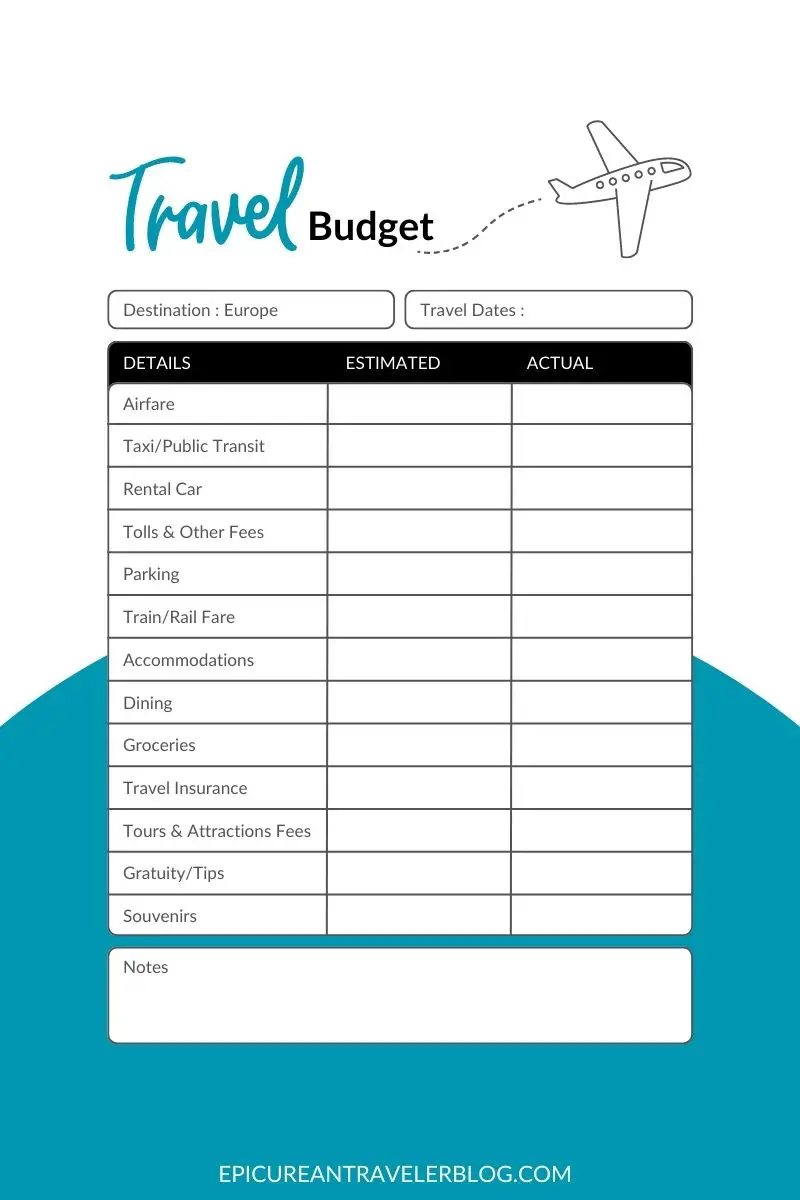
2. Add Travel to Your Personal Finance Budget
Once you have created your Europe trip budget, you should add your European vacation as a line item on your personal finance budget.
If you don’t already have one, you’ll first need to create a monthly budget for your personal finances. Make sure your personal budget includes both your fixed and variable expenses.
This will give you a better understanding of what you can and cannot afford regarding everyday expenses (like your daily coffee allowance), splurges like dining out or new clothes, and unexpected expenses such as a surgical procedure at The Bunion Cure at Northwest Surgery Center .
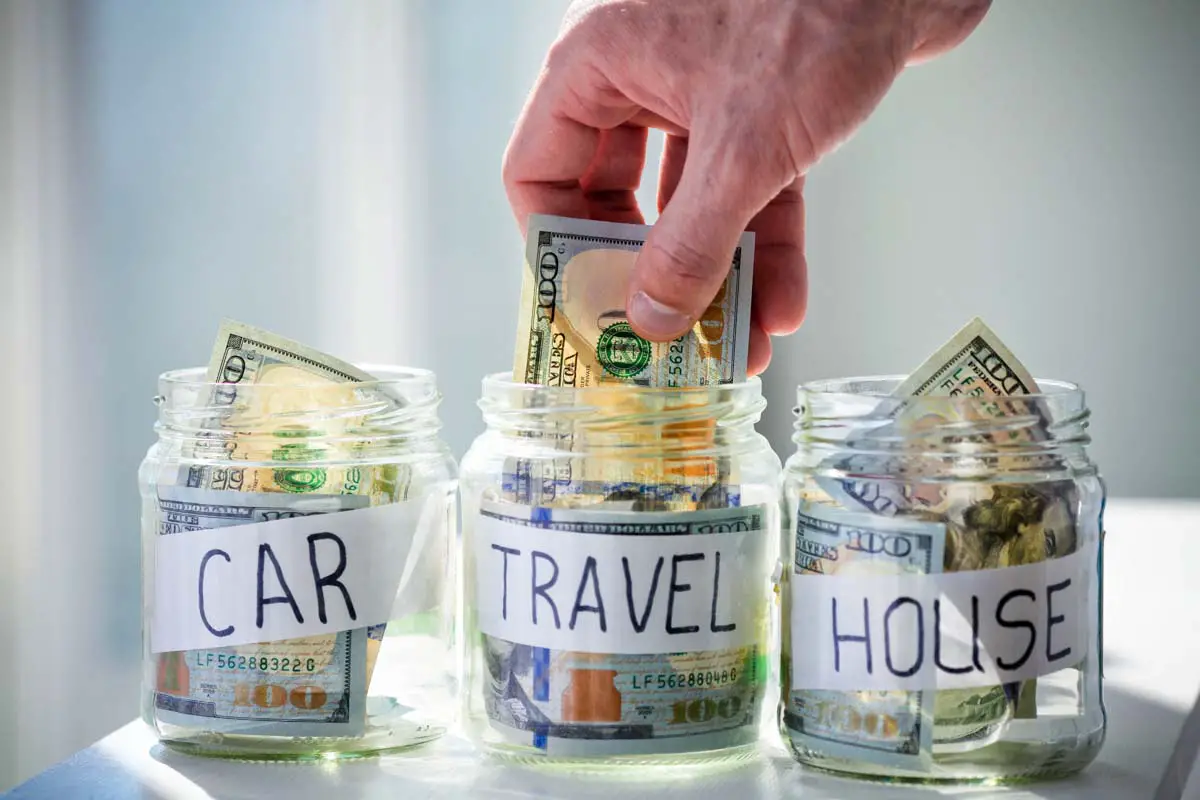
3. Cut Unnecessary Expenses
The easiest way to save money for a trip to Europe is by reallocating the money you typically spend on variable expenses in the everyday expenses and splurges categories of your budget to your travel fund.
For example, if you normally stop at your local coffee shop for a latte on your way to work, you could switch to brewing your morning cup of joe at home.
Do you typically rely on taking ride shares or cabs to get around? Or, are you regularly at the gas pump filling up your vehicle’s tank? Taking public transportation, riding a bicycle, walking, or carpooling could save you money for your trip!
Are there any subscription services that you could sacrifice for a few months? Could you eliminate your cable bill and keep one streaming service instead?
Do you really need a new dress for the wedding you’re attending? Could you style a dress already in your closet with different shoes or accessories for a “new” outfit? Borrow from a friend? Go thrift shopping or hit the sales rack for a less expensive alternative?
Every little bit counts and can add up to huge savings in the long run!
4. Earn More from Your Savings
Speaking of every little bit counts, you might consider putting your vacation funds into a high-interest-yielding savings account. Some online savings accounts are offering over 4% APY, as of July 2023.
Also, if you currently have accounts with a bank that collects monthly maintenance fees, foreign transaction fees, and/or ATM fees, you might also consider switching banks before your trip.
Not only will you save money before your trip without paying monthly banking fees, but you’ll also be able to use ATMs abroad without getting dinged with fees from your bank on top of the local bank.
5. Open a Travel Rewards Credit Card
Another way to save money for Europe is to open a travel rewards credit card.
Travel rewards cards allow you to save money by redeeming the points you’ve earned on both everyday and travel expenses for airfare or hotels.
Plus, some travel rewards cards offer additional perks, such as protection on travel purchases, car rental insurance, lost luggage insurance, or airport lounge access.
Additionally, sign-up bonuses can offset some of your Europe trip expenses. For example, you could earn 75,000 bonus miles, a $750 value in travel expenses, when you open a Captial One Venture Rewards Credit Card and spend $4,000 on your normal expenses (or trip-related expenses) within the first three months.
However, with great benefits comes a cost, and you should carefully consider if opening a travel rewards credit card is a good financial option for you.
First, though there are some travel rewards cards without an annual fee, others have annual fees of $95 or higher. For example, the Platinum Card from American Express has a lucrative introductory offer, access to airport lounges, elite status with Hilton and Marriott, and a concierge service that helps travelers book hard-to-get reservations, but the annual fee is $695.
If you are interested in applying for a travel rewards card, you typically need a good to excellent credit score to be approved. Additionally, to maximize the benefits of your travel rewards credit card, you should be in a state of good financial wellness and able to pay off monthly balances.
In addition to general travel rewards cards, you may also consider credit cards that offer benefits and the ability to earn miles/points for your airline or hotel brand of choice. The benefits of these cards can be quite advantageous for brand-loyal travelers and frequent fliers.

6. Avoid Foreign Transaction Fees
Did you know you can incur a foreign transaction fee before stepping foot outside the US? That is because a foreign transaction fee is not based on where you are located at the time of purchase.
Rather, a foreign transaction fee is charged by your credit card issuer when financial transactions are made outside of the country. For example, you could incur this fee when purchasing your rail tickets online in advance of your Europe trip.
Though the fees are relatively small at 1-5%, they can add up as you are booking your European vacation and, of course, while purchasing meals and souvenirs during your trip.
So, before you make reservations or bookings for your Europe trip, check that your credit card doesn’t charge foreign transaction fees.
Having no foreign transaction fee is another perk of travel rewards credit cards, but you may have a credit card with no foreign transaction fees already in your wallet.
It’s certainly worth checking which of your cards offer this money-saving perk!
7. Utilize Rebates, Coupons, and Discounts
Another way to save money for your Europe trip is to shop using rebates, coupons, and discounts on everyday items, such as groceries, as well as your travel gear and trip bookings.
There are a number of mobile apps and browser extensions you can install to earn rebates. Personally, I use the Ibotta , Capital One Shopping Rewards , and Rakuten browser extensions to earn cash back from my online purchases. I also earn cash back from Ibotta on in-person grocery shopping by clipping rebate coupons on the mobile app.
You can even utilize Ibotta for saving money as you book your Europe trip. Ibotta changes its offers from time to time, but a quick browse today showed cash-back earnings of 10% for AirportParking.com, 4% for Viator, 3.5% for Priceline, and 3% for Booking.com purchases among many others.
It’s beneficial to utilize multiple rebate apps or browser extensions (depending on how you shop) to maximize your savings. For example, Ibotta is offering 3% cash back on Priceline purchases as I pen this post, but Rakuten’s deal of up to 6% back beats it.
Rakuten also has rebate offers on travel booking sites, airlines, hotel chains, car rental services, cruise lines, and more travel-related products and services.
What I like most about using the Capital One Shopping Rewards browser extension is that it will automatically run coupon promo codes to get you the best deal when you check out from any online retailer. I’ve saved $788 using Capital One Shopping Rewards while online shopping over the past two years!
8. Pick Up a Side Hustle
If you need additional savings for your Europe trip, try picking up a side hustle. This could include freelancing gigs, taking online market research surveys, or even creating a small business of your own.
As long as your everyday expenses and a cushion for unexpected expenses are covered by your paycheck, the extra cash you make from your side hustle can be diverted towards your vacation fund. This can help you reach your vacation-funding goals even faster!
9. Sell Your Stuff!
Do you have items you no longer want but could be useful to someone else? Selling those no-longer-needed belongings is another way to earn more money for your European vacation.
In particular, if you have furniture, collector’s items (especially in the original packaging), or designer or brand-name clothing in good to “like new” condition with the sales tags still attached, then you should research the value of these items before selling.
For designer and name-brand clothing, you may want to consider taking those items to a local consignment or resale shop or listing them on Poshmark.
There also are a number of free online marketplaces where you can sell your gently used items. These include Facebook Marketplace, Craigslist, and OfferUp.
Of course, if you have a lot of items to sell that aren’t specialty or higher-priced items, consider hosting a yard or garage sale. You can also partner with a neighbor, friend, or relative to advertise a multi-household sale, which may attract more customers.
10. Ask for “Travel” as Your Gift
Do your relatives ever ask what you want for your birthday or Christmas? If you normally exchange gifts for birthdays, holidays, or other special occasions with family members or close friends, you can ask for cash for your trip!
Or, is this dream European vacation your honeymoon? If so, in lieu of registering for kitchenwares and home furnishings, set up a virtual honeymoon fund into which your wedding guests can contribute.
And, if it feels too awkward to directly ask for cash, you could offer other gift ideas that would help offset your travel expenses, such as an airline gift card, a new suitcase, or any other European travel essentials you still need.
11. Invite Friends to Split Costs
One of the best ways to save money when traveling is to share the cost of accommodations and transportation with travel companions. Rather than saving up for a solo trip, ask a friend or a group of friends to join you.
Of course, there are some travel expenses, such as your flight to Europe, that will be your own financial responsibility. This remains true whether you travel solo, with a travel companion, or with a group of friends.
However, you can invite your significant other, friends, or family members to join you on the trip and split some of the other travel costs.
By splitting the cost of your accommodations and ground transportation, you can reduce the overall cost of your trip and more quickly reach your trip savings goal.
RELATED: Five Tips to Successfully Navigate Travel with Friends
12. Avoid Traveling in Peak Tourism Season
One sure way to reduce the overall cost of your trip to Europe is by traveling outside of the high tourism season.
For many European destinations, prices are higher in the summer months as well as in early winter around the Christmas and New Year’s holidays.
Usually, the shoulder seasons (the weeks or months before and after high season) have lower airfare and hotel prices and fewer tourists crowding popular attractions than high season. Plus, the weather is still relatively pleasant in many European destinations during the spring and fall.
Of course, if your dream European vacation involves sipping glühwein at Christmas markets in Germany or swimming in the warm Mediterranean Sea, this bit of advice may not apply to your specific travel dream.
However, if you are open to traveling during a less popular time of year for Europe travel, you will likely save money on two of your biggest travel expenses — airfare and accommodations.
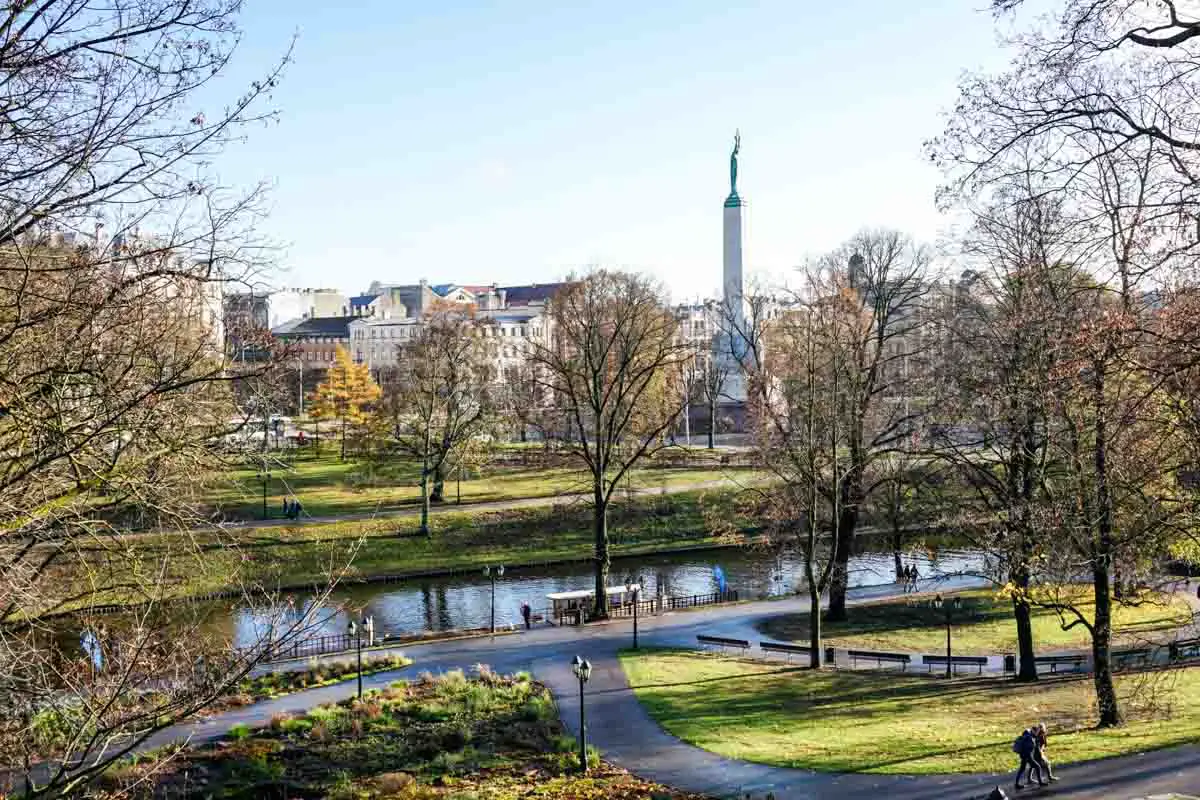
13. Choose a Cheaper Flight
Your flight will be one of your biggest expenses in planning your trip to Europe. Don’t get discouraged though — there are ways to find flight deals to Europe
First of all, the more flexible you can be with your travel itinerary, the cheaper your flight options may be.
For example, if you can schedule your flights for midweek rather than Friday through Monday, you’ll usually save money on cheaper airfare.
You can also use mobile apps and online tools, such as Skyscanner and Google Flights, to search for and alert you to cheaper fares.
Or, earn cash back on your flight (and hotel bookings) by joining the travel-deal aggregator website WayAway Plus .
MONEY-SAVING TIP: Get 10% off your WayAway Plus membership to start earning cash back on your Europe travel bookings today! Just click on my promo code EPICUREAN to get your discount!

Money-Saving Tips for Travel in Europe
If you are planning your dream trip, I hope you learned some money-saving tips for traveling to Europe.
In this post, I recommended that you research prices to create your trip budget. This way you will know how much you’ll need to save and spend on travel expenses.
I’ve also shared strategies to implement to save or earn more money for your vacation fund.
You could increase your travel funds by putting your savings into a high-interest yielding account, taking on a side hustle, asking for cash (or trip-related gifts), or selling your gently used belongings that no longer spark joy.
Finally, I also shared ideas of how to keep your costs lower when traveling to Europe from the US. By inviting travel companions to join you or taking your trip at lower-cost times, your overall trip costs will decrease.
Need inspiration for your Europe trip? Browse top Europe tours and activities below!
TL;DR: Remember these tips to save money for a Europe trip!
- Research travel costs for Europe early on, create your trip budget, and use your budget spreadsheet to track your spending.
- Save money for your trip by making small cuts to your everyday expenses and splurges, such as carpooling rather than driving solo to work.
- Earn more money for your European vacation fund by switching to a high-interest bank account, asking for cash gifts, selling your gently used stuff, and/or getting a side hustle.
- Download rebate mobile apps or add their browser extensions to earn cash back as you shop online for your travel gear or make trip bookings.
- Open and use a travel rewards credit card, such as the Chase Sapphire Preferred Card or the Capital One Venture Rewards Credit Card, for your everyday expenses to earn travel rewards that can be redeemed for airfare, hotel stays, car rentals, and cruises.
- Use Skyscanner or Google Flights to search for cheaper airfare, or join WayAway Plus (10% off with my promo code EPICUREAN ) to earn cash back on your flight to Europe.
- Reduce your Europe trip costs by flying midweek, traveling in the off season, or sharing accommodations with travel companions.
- Pay for your hotels, rail tickets, and tickets for attractions and tours with a credit card that has no foreign transaction fee.
- Bonus Tip: While you are traveling in Europe, pay with a credit card to get the best exchange rate.
Read These Posts for More Europe Travel Tips
- Packing for Europe: How to Pick the Best Women’s Shoes to Wear in Europe [Summer Edition]
- 12 Famous French Foods in Paris to Eat — And One to Avoid!
- Five Amsterdam Restaurants Where You Should Eat (According to a Netherlands Travel Expert)
- Top 8 Copenhagen Seafood Restaurants
- Cyprus Dining Guide: Best Restaurants in Five Top Cyprus Travel Destinations
- Paros, Greece Travel Guide: Tips for Visiting the Greek Island
- 10 Photos of Ireland to Inspire Your Trip
- Italian Coffee Guide: 15 Things You Should Know Before Drinking Coffee in Italy
Planning a trip to Europe? Save this post to your Europe travel board on Pinterest to easily refer back to it later!
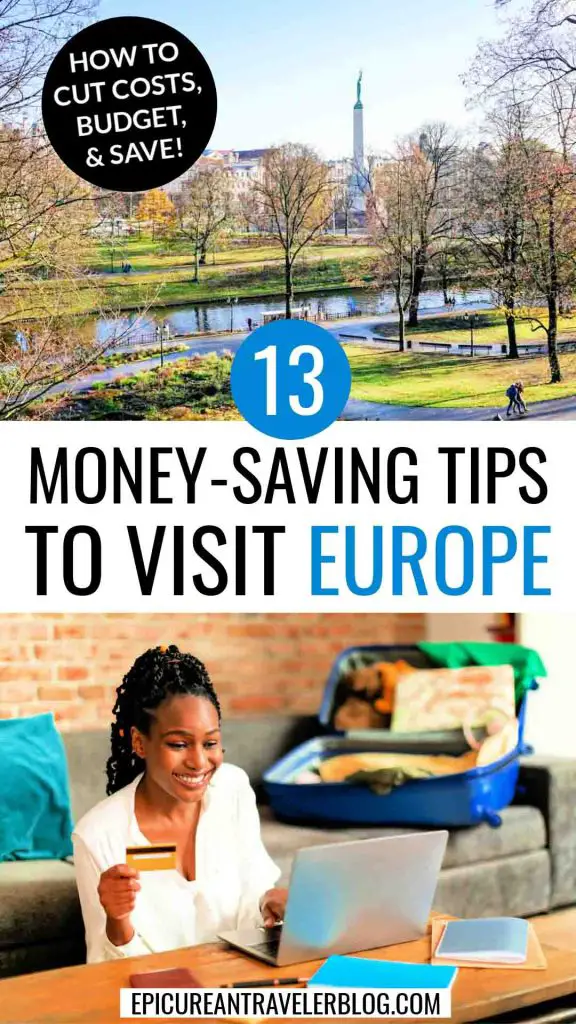
Editor’s Note: Photo credit for the lead image of a traveler counting cash while trip planning (© Syda Productions /Adobe Stock)

About Erin Klema
Erin Klema is the founder and editor of The Epicurean Traveler, combining her journalism background with her passion for culinary travel. When she isn't exploring the world through unique, local culinary experiences, she enjoys cooking with her husband, planning her next trip, and reading or watching a good rom com.
Reader Interactions
Leave a reply cancel reply.
Your email address will not be published. Required fields are marked *
Notify me of new posts by email.
Privacy Overview
- 71 Pinterest
- More Networks
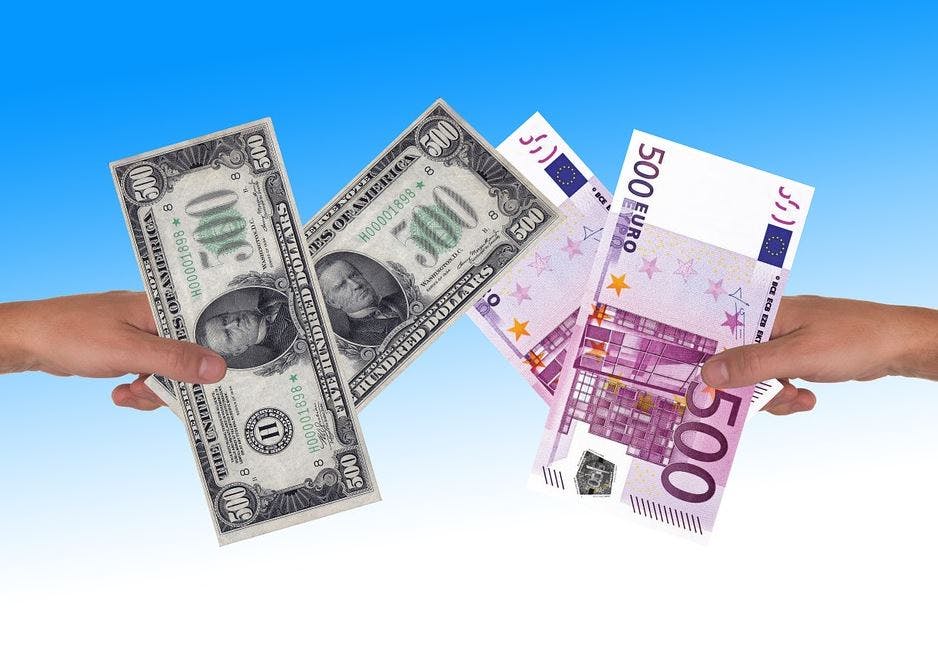
What's the Best Way to Get Euros For Travel in 2023?

Byron Mühlberg
Monito's Managing Editor, Byron has spent several years writing extensively about financial- and migration-related topics.
Jarrod Suda

A writer and editor at Monito, Jarrod is passionate about helping people apply today’s powerful finance technologies to their lives. He brings his background in international affairs and his experiences living in Japan to provide readers with comprehensive information that also acknowledges the local context.
Links on this page, including products and brands featured on ‘Sponsored’ content, may earn us an affiliate commission. This does not affect the opinions and recommendations of our editors.
The Euro (€) is the official currency of some of the world's most popular holiday destinations, and is used in France, Spain, Italy, Germany, and 15 other countries across the length and breadth of the Eurozone. If you're planning a trip to any of these places, having Euro cash in your wallet can be a convenient way to spend money on your holiday and fill those gaps where your card isn't supported.
However, many traditional methods to buy Euros tend to be very pricey, often costing as much as 10% of the transaction value in hidden exchange rate fees.
In this guide, we break down the two best currency exchange rates to get Euros : buying foreign banknotes or withdrawing them from an ATM with a travel debit card like the Wise Multi-Currency Account or Revolut .
Wise : Use this travel card at ATMs on your travels to get Euros cheaply if you're from the US, UK, Australia, New Zealand, Singapore, Japan, or Switzerland. This account gives you multi-currency bank details in 10 currencies and a debit card to spend in dozens of others.
Here's the Best Way to Get Euros For Travel
- 01. Best option: Use a multi-currency travel card scroll down
- 02. Recommended: Use a debit card at an ATM scroll down
- 03. Not recommended: Ordering Euros from banks scroll down
- 04. Last resort: Buying Euros from airport bureaux de change scroll down
Use a Multi-Currency Travel Card
Fintechs and challenger banks typically offer the most competitive offerings in this category. These travel card have many benefits for those looking to withdraw Euros cheaply, including:
- Lower or no account maintenance fees;
- Lower or no foreign ATM withdrawal fees;
- Lower or no fees on foreign payments and online transactions;
- Some even include fully-fledged multicurrency account features.
Where Can I Exchange Currency For Euros?
The Wise Multi-Currency Account and Revolut are two of the best multi-currency platforms in the world for exchanging foreign currency and buying euros cheaply. The exchange is done entirely online, and when the euros are loaded onto your account, you can spend like a local in the Eurozone with your physical or virtual debit card:
Revolut is our top choice for travel money because it charges zero fees for first £1,000 per month that you exchange. The platform works entirely by desktop or smartphone, and they send you a debit card to access your travel money. After the fair usage limit, Revolut charges 1% of the total for Standard plan customers. If you upgrade to their Premium, Metal, or Ultra plans, then you the fair usage limit will be completely lifted.
You can use Revolut's debit card to use at ATMs for local cash. As a Standard customer, you'd get £200 month of fee-free withdrawals.
Learn more: Read our in-depth Revolut review or visit their website .

- Trust & Credibility 8.9
- Service & Quality 7.9
- Fees & Exchange Rates 8.3
- Customer Satisfaction 9.4
Wise Account
The power of the Wise multi-currency account comes from never charging hidden exchange rate margin fees. No matter which foreign currency you want, Wise will always apply the real mid-market exchange rate to your conversions. Instead, it charges a transparent service fee that ranges from 0.3% to around 2% depending on the currency.
For holiday cash, you can use the Wise debit card for 2 free ATM withdrawals for a total of £200 per month.
Learn more: Read our in-depth Wise review or visit their website .

- Trust & Credibility 9.3
- Service & Quality 8.9
- Fees & Exchange Rates 7.6
- Customer Satisfaction 9.6
Withdrawing Euros at European ATMs
The other major way to get Euros is to withdraw them directly from a foreign ATM once you've arrived in Europe.
To withdraw Euros at a European ATM, you'll either need to use your everyday bank debit card (which can come with some hidden costs), or a multi-currency travel card (which can save you a lot over the long run).
Using Your Credit or Debit Card
When you use a card issued by Visa, for example, Visa will covert the money in your home bank account into the local currency of your holiday destination.
The Visa and Mastercard currency conversion rates are very low (around 0.2%-0.5%), making debit and credit cards a viable option. You can track the Visa exchange rate here and the MasterCard exchange rate here . Just make sure to find cards that charge no international transaction fees . These fees, also called "foreign transaction fees", are a much higher percentage and add up very quickly.
Avoid Euronet ATMs
Euronet is a major ATM network found across Europe, especially in tourist locations such as airports, shopping centres, and busy streets. These ATMs tend to be pricey (charging fees between €1.95 and €4.99), and can make it easy to pay in your home currency and be subject to an exorbitant dynamic currency conversion too. As a result, if your bank has a network (or partner network) in the European country to which you're travelling, we recommend withdrawing from those ATMs instead.
Find out more .
Buying Euro Banknotes
When travelling to a country in the Eurozone, it can be handy to have a stack of Euro banknotes at the ready for convenient cash spending from the get-go. As a result, buying Euros before or during a trip to Europe is a popular way to spend abroad — albeit a very expensive one.
As we'll explore shortly, visitors to Europe can buy Euros from different places — namely from the bank or from a bureau de change. However, this option tends to come at a steep cost that's sometimes higher than 10.00% of the value of the amount you're converting.
Let's explore a bit more how this works:
Buying Euros From Your Bank
One of the main ways to get Euros before a trip to Europe is to buy the banknotes directly from your bank in your home country. These services come at different costs depending on 1) whether or not you're an accountholder with the bank in question and 2) whether you choose to have the cash delivered to your home or collect it in person at a branch. Either way, the costs are quite steep, typically exceeding 5.00% and sometimes even going upwards of 10.00% of the total transaction value.
To get a better picture of how this works, take a look at the cost of buying Euros (with hidden exchange rate margins included) at several major US, UK, and Australian banks:
Quoted: 27/08/2021 12:00 GMT +02:00
** TD Bank rounds down currency sold to the nearest hundred.
** Many Australian banks are decommissioning FX cash services.
Buying Euros From European Banks
Alternatively, you can buy Euros from European banks after having already arrived. Most European banks with branches in and around city centers have foreign exchange services geared toward tourists and support currency conversion into the Euro from most major foreign currencies, including the US dollar , British pound, and Canadian dollar.
However, just as with your local bank, buying Euros from European banks will also cost you — albeit possibly slightly less than with a US counterpart, for example. If you choose to buy Euros in Europe from a local bank, you can expect to pay fees in the region of 3.00% to 9.00% of the transaction value.
Banks That Exchange Foreign Currency For Free
There are no banks that exchange foreign currency for free. Be careful when confronted with banks or bureaux advertising "no fee" exchanges, as this often means that they are incorporating hidden exchange rate margins into their services. While these options may serve as a last resort during emergencies at airports, they are ill-advised to exchange foreign currency for euros.
We always recommend that you get cash at an ATM in Europe with a multi-currency account card like the Wise Multi-Currency Account or Revolut . The fees are a fraction of the size and their online interface is user-friendly.
Buying Euros From Bureaux de Change
Another place to buy Euros is at bureaux de change, specialised currency exchange offices geared toward tourists. They are commonly found in airports, central locations in many European cities, and practically anywhere that's frequented by tourists.
While bureaux de change may appear to be a quick, convenient, and accessible way to buy Euros (they exchange dozens of currencies — usually even more than banks), they also happen to be the most expensive way of all to get the job done. This is because of the following two types of fees that are usually associated with buying foreign currency:
- Transaction fee: A fixed fee or variable commission that's sometimes charged on every Euro conversion you make.
- Exchange rate margin: A margin that forms the difference between the bid price of the foreign currency as obtained by the bureau de change and the ask price you'll be paying. This tends to form the highest cost of exchanging currency.
According to Monito's research, the total cost of ordering foreign banknotes combined tends to range from 2.15% to a whopping 16.60% of the total amount converted, depending on where you exchange cash and how much you exchange in the first place.
A great feature with multi-currency accounts like Starling Bank (in the UK), Wise , and Revolut is that any leftover euros you have at the end of your trip can be converted online to any other currency you want at the real mid-market exchange rate, minus an industry-low fixed fee. That money will still be accessible from the very same card.
See Our Top Guides On the Best Way to Get Euros For Travel and Where You Can Exchange Foreign Currency
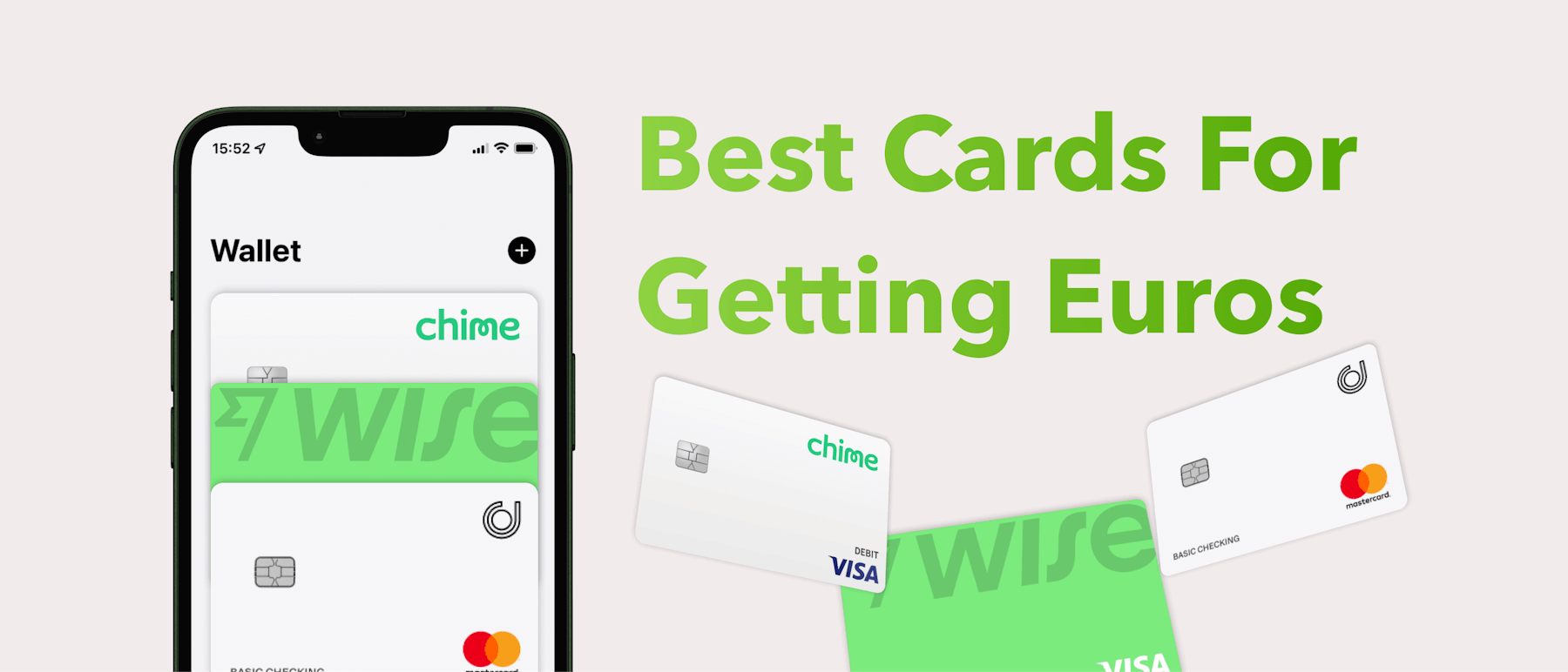
Why Trust Monito?
You’re probably all too familiar with the often outrageous cost of sending money abroad. After facing this frustration themselves back in 2013, co-founders François, Laurent, and Pascal launched a real-time comparison engine to compare the best money transfer services across the globe. Today, Monito’s award-winning comparisons, reviews, and guides are trusted by around 8 million people each year and our recommendations are backed by millions of pricing data points and dozens of expert tests — all allowing you to make the savviest decisions with confidence.
Monito is trusted by 15+ million users across the globe.
Monito's experts spend hours researching and testing services so that you don't have to.
Our recommendations are always unbiased and independent.
- Tour Account ›
- Travel Forum ›
- Travel Forum
- Money-Saving Stra...
- Cash vs. Credit i...
Cash vs. Credit in Europe
I recently read a newspaper article written by someone at the NY Times advising that post-COVID, most European countries prefer credit to cash, and supposedly, many businesses will not even accept cash as payment. Since we have not been to Europe since 2019, are others finding this to be true? We generally take foreign cash with us; however, if credit is the desired form of payment in Europe, then we won't need to take as much. Also, I'm wondering if taxis will now take credit cards; the article did not discuss taxis.
I'd appreciate thoughts on this from anyone who has traveled to Europe recently. We will be traveling in Germany, Austria, and Hungary in September. Thanks so much!!
This is a much discussed topic, so you may want to search the forum for recent answers. In summary, you will need some cash but many places take credit cards. Traditionally, Germans pay in cash.
I stayed in eleven cities in Italy in June, and I usually always pay cash except for hotels and reservations I buy on-line - train tickets, activities, etc. None of the restaurants, shops, etc. had any issue with me paying cash.
I've lived in France for quite awhile, and I've never experienced anyone turning down cash. Kind of hard to visualize that, actually.
That said, I wouldn't pay a premium to load up on euros before arriving in Europe. Euros are easy to come by once in Europe.
My parents were in Sweden in May, and they had trouble spending the cash they withdrew. Most places would not take cash. But then, that was Sweden. In France, Italy, Spain, Portugal, Germany, cash is definitely still welcome. I assume the same for Austria, no idea for Hungary.
We generally take foreign cash with us; however, if credit is the desired form of payment in Europe, then we won't need to take as much. Also, I'm wondering if taxis will now take credit cards; the article did not discuss taxis.
See the entire topic in complete context. Read Rick's full article, look for updates form the RS crew, study other travel forums especially those devoted to analyzing travel credit cards.
The old advice on cash is to acquire it locally upon arrival from an ATM.
Tap or even tapless transactions are the norm in most regions and businesses. The tech is much more prevalent than in the States. If you don't have a tap card or contactless method (such an Apple iPhone), get one and practice using it before you depart.
https://community.ricksteves.com/travel-forum/germany/cash-or-credit-card-in-germany-and-austria
Pretty sure this still depends on the country.
Post-covid I've only been to Portugal and Greece. In both cases I was able to use credit (tap to pay) almost everywhere but ran into a couple random establishments each that were cash-only. I think I COULD have used cash most places, but credit was easier and seemed to be preferred. Pre-covid, this was similar except in Austria and Germany, which in 2019 were very cash-heavy compared to other places. Meanwhile, Iceland was so heavily credit card based that I had a hard time using the equivalent of roughly $200 I got out in a week. I don't know if that has changed in either case, probably not too much.
And I'm pretty sure this also depends even more on how you travel. If you stay in mainline In-ter-na-tion-al hotels, they probably take credit cards, but there is an even bigger pool of small places that don't. And they are far less expensive to stay in. In twenty some years traveling around Germany and surrounding countries, I have spent a lot of nights in Privatzimmer and Mom&Pop Gastehäuser, almost none of which take credit cards. I've had many places inform me after booking or after arriving that they take only cash.
And I've saved a huge amount to money by staying in these places that don't take plastic.
Just returned from Germany and Italy. Other than a few air bnbs that we prepaid online, we used primarily cash which was welcome everywhere we went. We did not visit large tourist cities - were in smaller towns/ areas visited primarily by other Europeans. They were happy to accept cash- no problem.
Hungary Cash: day guides, some off the beaten path entrance fees, tips (you can't always up thr tap card for the tip), small towns and mom and pop shops on rare occasions, any time you want to pay and leave quickly. Credit Card: everything else including taxis. Tap Card: universal Currency: Forint, not Euro. If euros are accepted, you are in tourist central and you will pay for it. Source: Any ATM, but best to use a bank ATM. Pocket cash: 20.000 forints (about $50)
Norway is so card-focused that it is very difficult to find a bank ATM. Sweden seems not quite so cash-averse, but there are plenty of places (including some major museums) with "We are cash-free" signs. I suspect those two countries are at the far edge of the cash/credit continuum.
Even in traditionally cash-based Germany, there is a move towards card payment. Same small restaurant in Passau, Bavaria, where we had to pay cash in 2018 now accepts credit cards. During a one week visit in May this year, I spent less than 30 € cash (in two local bakeries). All other food and B&B was paid with credit card (tap to pay or PIN, depending on the amount).
London in May. Credit or debit card worked everywhere. Several places had “card only” policy.
"I've never experienced anyone turning down cash"
That may or may not be in play at merchants but it's not about cash in general, it's about moving around with the least amount of cash and utilizing the convenience of CCs and DCs, particularly the Contactless Pay feature - be as miserly as you can be with cash.
I definitely ran into a few card-only establishments in Iceland. Mostly in very rural areas, I’m betting that getting to a bank for deposits/withdrawals of cash was expensive or difficult so they did card only. Also things like parking kiosks at popular sights were unmanned and some did not have a cash option. Not in any other country though (I have not been elsewhere in Scandinavia so can’t speak to those countries).
In places like Greece and Italy many of the mom and pop places take and prefer credit. It’s certainly not only big international establishments. Of course, others prefer cash. Moral of the story: have both but don’t get too much cash for short trips before you see the situation on the ground.
Hi Carol, I think it depends on the country that you're traveling to, but in general, the Scandinavian countries prefer credit and other places cash is fine. It seemed to be like that in recent years pre-covid also. Happy Travels!
So, are businesses who won't take cash generally posting this information at the door, or do you have to find out when paying? I get that some populations are moving to card-only, but I think my (the customer) preference should matter too.
To me it looks like people who prefer card transactions for everything, do so to simplify the process and avoid counting. I don't find cash transactions to be onerous.
In Germany and Austria you just might be told especially in restaurants or eateries that your credit card won't be accepted when you give your card to pay.. I've seen this several times, both in so-called tourist areas and non-tourist businesses. If the business takes both cash and a credit card as payment in Germany, I'll pay with cash. They will stay with preferring cash...good.
In other countries I'm more likely to use the credit card, just depends.
Since your itinerary includes Germany and Austria, have the cash on you,
Definitely depends on the country and where you are spending your money. We just got back from Spain and Portugal and found that Spain was very credit card friendly, though happily took cash whereas Portugal was very cash friendly. We were able to use credit cards at larger places, but many restaurants ONLY took cash.
We did take Uber a few times and of course, that is paid on your account. We paid for taxis by credit card when we were in Italy in 2018.
Thanks to all who responded to my inquiry--some very helpful information here! And yes, I did find a similar posting from someone who read the same article (I'm still trying to find my way through this website :), so sorry for any redundancy).
So it appears that the best option is to be prepared with both credit cards and cash, which we usually do anyway.
Thanks again, everyone, and safe travels!
This topic has been automatically closed due to a period of inactivity.
Travelling from the UK to Europe? Spend effortlessly in Euros (EUR) with a multi-currency card.
40+ million worldwide customers use Revolut
Revolut offers so much more than a travel card. Exchange currencies, send money abroad, and hold 36 local currencies in-app. These are just some reasons why our customers rely on us for their travel spending.
How does a Euro card work?

How to get your EUR card
Get your Euro card in 3 steps
Get revolut.
Join 40+ million people worldwide saving when they spend abroad with Revolut.
Order your card
Order your free Euro card. Top up your balance in GBP or 36 other currencies.
Spend like a local
Start spending in Euros.
Currency exchange fees subject to fair-usage limits and weekend markups. Currency exchange shown is only an indicative example.
Why should I get a Euro card?

Where is the Euro card available?

Spend confidently with a Euro card

How to save money when spending in Euros
Tips for saving money in Europe
Don't exchange at airports or at home.
No need to exchange cash before you travel — use your travel money card to spend or withdraw money from an ATM.
Choose EUR as the local currency
Choose the local currency when spending with your card in shops and restaurants.
Save with a travel money card
Spend in Euros like a local with Revolut.
How to avoid unwanted ATM fees

Need to make EUR withdrawals in Europe?
Fee-free Euro ATM withdrawals
Fee-free atm withdrawals up to £200, fee-free atm withdrawals up to £400, fee-free atm withdrawals up to £800.
ATM withdrawals are subject to fair-usage fees depending on plan. Currency exchange fees may apply.
What are you waiting for?
Save when you travel with a EUR travel card
Rating as of 19 Apr 2024
701K Reviews
2.8M Reviews
Need a little more help?
Euro currency card FAQs
Is it better to use a travel money card rather than cash in europe.
There is no 'best' way to spend in Euros, but here are some tips to help you save money:
- Don’t exchange cash at the airport. It’s much cheaper to withdraw money from an ATM with your Euro card.
- Don't carry more cash than you need. When you return home to the UK, you’ll have to re-convert this cash back to GBP.
- Always choose EUR as the local currency when spending with your card in shops and restaurants.
- Download the Revolut app, then sign up to get instant notifications on what you spend and manage your balance.
Are travel money cards safe and secure?
Where can i use my eur travel money card, how much can i pay using my euro card.
There is no limit to the amount that you can spend using your Euro card. Just top up in-app with however much you want and enjoy your travels.
How can I avoid unwanted ATM fees in Europe?
There are tonnes of benefits to a Euro card. Let’s look at a few:
- Send and spend in Euros and 150+ other currencies.
- No need to exchange or carry cash. Pay with your Euro card, either contactless or with chip and PIN.
- No need to wait for your physical card to arrive. Instantly add your card to Google Pay or Apple Pay.
- Create single-use virtual cards for safe online shopping or travel bookings.
- Enjoy fee-free ATM withdrawals between £200 and £2,000 monthly, depending on your plan.
- Get instant payment notifications to keep track of how much you spend.
- Stay in control of your card’s security, with card freezing and spending limit controls.
- Easily manage your spending around the world with the free Revolut app.
How do I get a Euro travel money card?
To order your Revolut debit card and start spending in Euros, simply:
- Download the Revolut app on your Android or iPhone and sign up for free.
- Order your free Euro card. Top up your balance in GBP or 150+ other currencies.
- Get your card in the post or add it to Google Pay or Apple Pay to use it immediately.
- Start spending like a local in Euros.
You are here
How to save money on your next european holiday.
Your complete guide to a budget holiday in Europe
Planning is key: top tips for booking a budget holiday in Europe
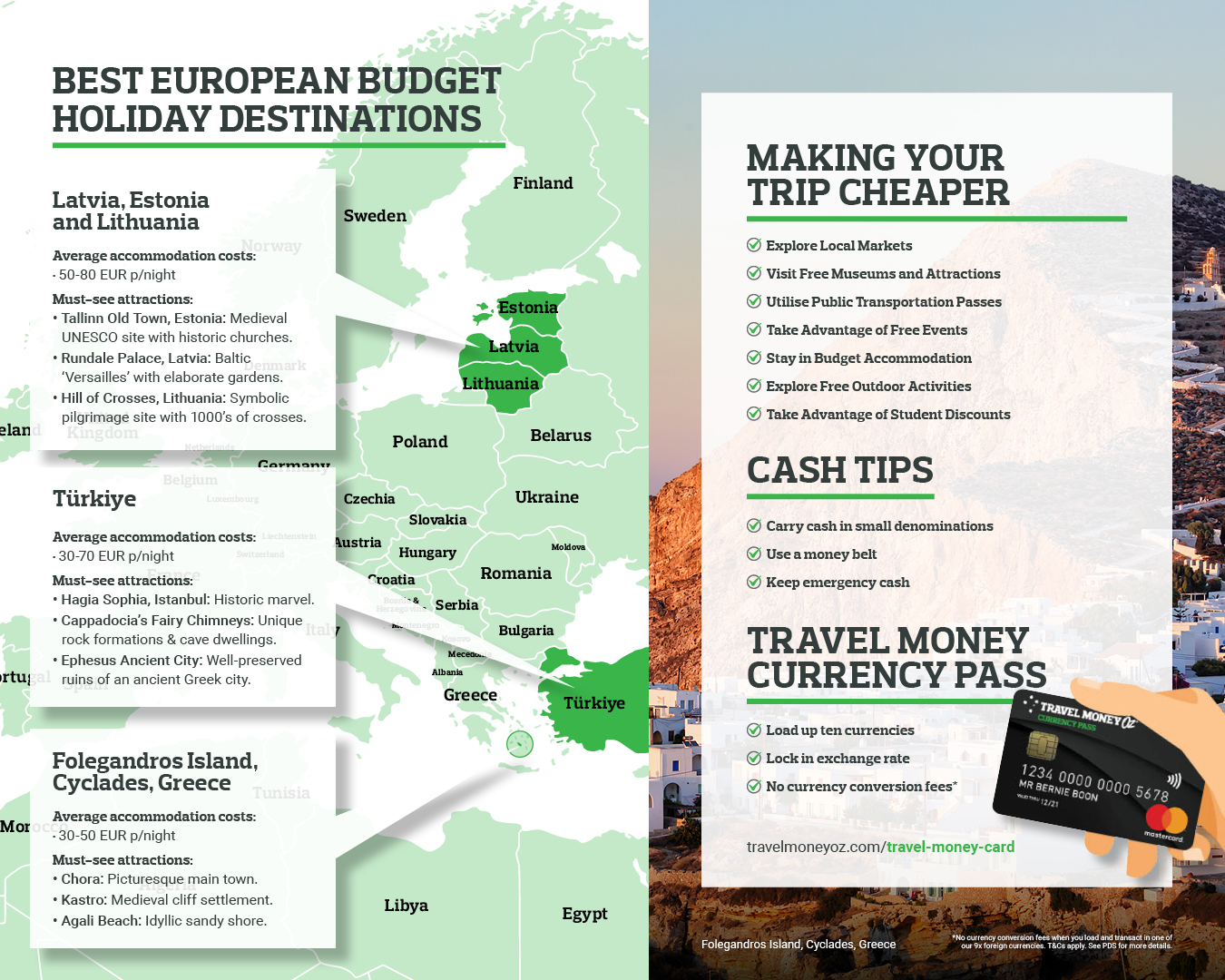
The cheapest time to travel to Europe
If you scroll through your socials any time from June to August, you’ll see an influx of Aussies on #eurosummer trips. Once you’ve spent time contemplating how they afford it in peak season, go to your calendar and block these dates out if you’re on a budget. Demand in this period is high and these are expensive months to travel to Europe.
If you want the Euro summer experience without the huge price tag, then travelling in the ‘shoulder seasons’ of spring or autumn will offer considerable cost savings. Even a few weeks can make a difference.
It’s also worth geeking out on the weather apps to see how long you can stretch out the summer experience. If you want to be living la dolce vita on the island of Capri in Italy, for instance, October still offers a relatively balmy average high of 23C, while saving you money.
If you’re not tied to a summer trip, Europe has plenty to offer all year round. However, you’ll still want to avoid travelling over major holidays like Christmas. If you don’t have little ones in tow, then try to skip school holiday periods entirely, as flight costs from Australia will spike during those weeks, too.
The best European budget holiday destinations
Just like in real estate, it’s all about location, location, location. The big hitters like Italy and Greece are always going to be expensive during the summer months. If you want to get similar Euro vibes, without the high price tag, it can be worth looking further afield.
Are you craving the rich culture and history of a city like Rome, but don’t want to shell out for wildly expensive accommodation? There are a bunch of other hotspots across Europe to consider. You could explore the cultural hubs of Latvia, Estonia and Lithuania (see our guide to the Baltics here) or get your ancient history fix where Europe meets Asia in Turkey. Sure, it’s hard to beat the charm of the Spanish Steps or the grandeur of the Colosseum but you certainly won’t miss the crowds or the prices.
You could also look for lesser known locations in your country of choice. The Greek Islands are the perfect example. If you’re dreaming of Santorini sunsets but want to save money, hop on a ferry and try another island, like Folegandros, instead. You’ll get the same sparkling blue seas, an authentic Greek experience and cheaper accommodation to boot. Bonus: you might actually be able to find a spot on the sand to roll out your towel and a seat at a taverna for sunset.
Consider your currencies to save money in Europe
While you’re thinking about what you’ll need to pay for on holiday, also consider how you’ll pay for it while overseas. This is an area where a few simple tricks can really keep your Euro trip budget in check.
Do your research on local currencies Don’t wait till the day of your departure to figure out your finances. Make sure to do your research and get your local currencies in advance. Of course, most countries in Europe use the Euro, but there are a few exceptions. For example, if you’re headed to the glorious alps, you’ll be fine with Euros for Italy and Austria, but they’ll be less useful in Switzerland (where you need the Swiss Franc). Having it all mapped out before you go can save you from some uncomfortable conversations and even more uncomfortable credit card fees.
Get a travel money card to save on exchange fees Speaking of, instead of relying on your credit card, having a travel money card like our Travel Money Oz Currency Pass, can mean serious savings in Europe. Lock in your exchange rate, load up your card with local currency and avoid conversion fees at your destination. You can add up to 10 currencies on your card in advance and don’t forget to factor in your stopovers. Trust us, having some currency for snacks on your Singapore layover can be a lifesaver, especially if you have some hangry toddlers in tow! You can track your balance on our website, just like internet banking, which is a great way to monitor your budget while travelling across Europe. And if you are headed to a destination where the currency isn’t available on card, load up in AUD instead and when you select “local currency” it’ll exchange at the best rate Mastercard can provide at the time!
Sometimes, cash gets you cheaper prices! Last but not least, when you’re doing your research, make sure to check if cash or card is preferred. Sometimes, you can even get a cheaper price when you pay in cash instead of card – a workmate of ours got a 20EUR discount on her sailing tour in Greece just for paying in cash! Cash also comes in handy when it comes to tipping, local markets, paying to use the bathroom and areas with poor signal. We always recommend taking a blend of cash and travel card for your travels – and we have a breakdown on recommended splits in this blog .
Book your European holiday in advance
Booking ahead pays off, especially when it comes to flights. While some transport and services can be cheaper to sort out when you arrive at your destination, flight costs tend to increase exponentially as the travel date draws near. This is critical in summer periods and over major holidays. It’s also worth looking up the attractions that you plan to target to see if you can score early-bird discounts. Plus, you’ll get to skip the ticket queue, too.
Set a budget for Europe – and stick to it
It sounds obvious, but the key to a budget holiday is setting an actual budget beforehand. Figure out how much you’re willing to spend and work backwards from there. Don’t forget hidden costs either, like insurance, visas, and taxes. It helps if you decide on your non-negotiables – i.e. can you settle for more basic accommodation so you can splurge on special experiences at your destination?
This Budget Planner tool is a useful starting point, along with our guide to how much it costs to travel in Europe .
Going on a tour can be another frugal travel strategy in Europe, as major expenses like accommodation, transport, attractions and even meals can be packaged up and paid for upfront. Bigger tour providers often get group discounts, too. When it comes to tours, it’s certainly worth doing the research ¬– and the sums. It may lead to savings for some travellers, but it won’t always be the cheapest option.
How to find budget accommodation in Europe
You might associate hostels with rickety bunk beds, shady roommates and all night raves. If that’s your thing – good for you, book with abandon and save those dollars. But if it isn’t, don’t rule them out just yet. Hostels have come a long way – turns out ‘poshtels’ are even a thing.
There are hostels scattered throughout Europe that offer up the big benefits, like affordable rooms, kitchen and laundry facilities and central locations, without compromising on quality. Many cater for families or have private rooms if you’ve moved on from dorm life. Along with major chains like Meininger and A&O (they have 40 hostels in 25 cities across Europe), there are also ‘boutique hostels’ across the continent.
Another way to save cash on your Europe trip is to book accommodation with self-catering facilities. Eating out at every meal really adds up, so booking a rental home or even a room with a few basic kitchen appliances can make a difference.
Be smart about the way you book accommodation. Many options, whether it be hotels, hostels or rental homes, are cheaper if you go direct. It can also be easier to troubleshoot any issues with your booking this way, too.
Currency Pass Europe on a budget blog.png
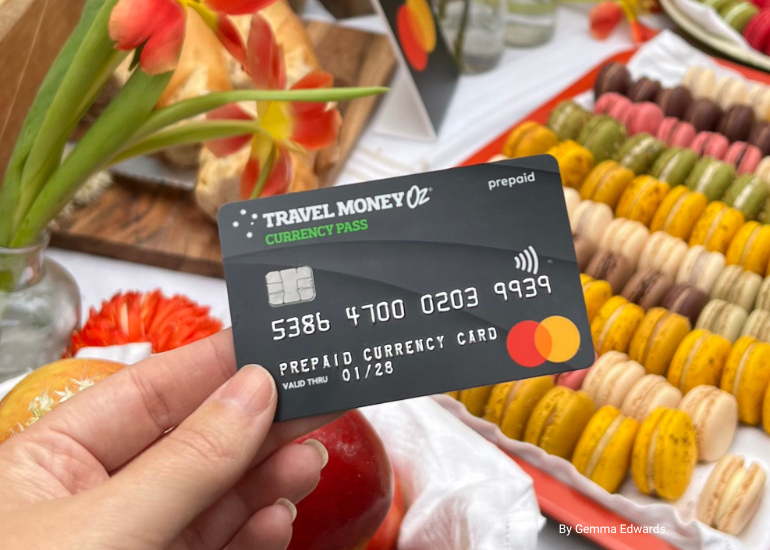
Top tips for cheap transport in Europe
Being smart about your mode of transport will lead to big savings when travelling in Europe. If you’re going to multiple destinations, consider your options wisely when travelling between countries.
Budget airlines reign supreme across Europe – they’re often the cheapest way to travel between major cities. Low-cost carriers like Ryanair advertise flights within Europe for as low as £14.99 one way, however you’ve absolutely got to read the T&Cs. Along with standard fees like check-in baggage and seat selection, extra costs come flying at you for things like checking in at the desk instead of online and for carry-on that won’t fit under the seat in front of you. Yes, overhead compartments will cost you.
Europe also has a large rail network, with high-speed options between many cities. If you’re planning a multi-leg trip across Europe, a pass through a provider like Eurail might be the ticket to savings. However, for one-off trips, a budget airline is often cheaper. Depending on your style of trip, rental cars are an option – but you will have to shop around for a deal.
When travelling within cities, public transport is always your friend. Most major cities offer rail and bus routes. If you’re planning to do a lot of travel around a city, a multi-trip or multi-day pass will usually be much better value than purchasing single tickets. Just be mindful of the way you pay. A travel money card, like our Travel Money Oz Currency Pass, is handy in this situation, so you avoid extra conversion fees when you’re paying for transport.
Of course, the cheapest option is always just to hit the road and walk! Ambling through cobblestone streets and discovering hidden local gems on foot is part of the appeal of a Euro trip and will cost you nothing.
Lisbon Tram (2).png
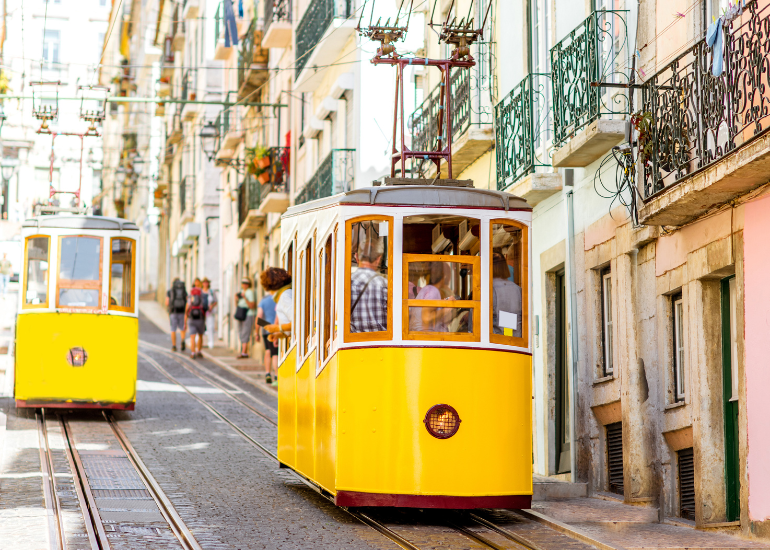
How to save on major tourist attractions in Europe
Once your major expenses are paid for, you’ll also have to factor in sightseeing costs when travelling in Europe.
Luckily, whether it’s the Eiffel Tower in Paris or the Trevi Fountain in Rome, so many of the iconic landmarks in Europe can be admired without shelling out for a ticket. You can also save your precious dollars by seeking out free attractions in each location. In London, for instance, major cultural institutions like the British Museum, Tate Modern, Natural History Museum and the Victoria and Albert Museum are either free to enter or have free collections on display.
You can also find free walking tours in most European cities, many of which operate on a tips-only basis. Make sure you bring local currency to tip your guide as many guides don’t carry card readers.
If you have a number of ticketed attractions on your wishlist, it’s worth looking into combo deals – especially if you’re planning on staying in the one city for a while.
Trevi Fountain 2.png
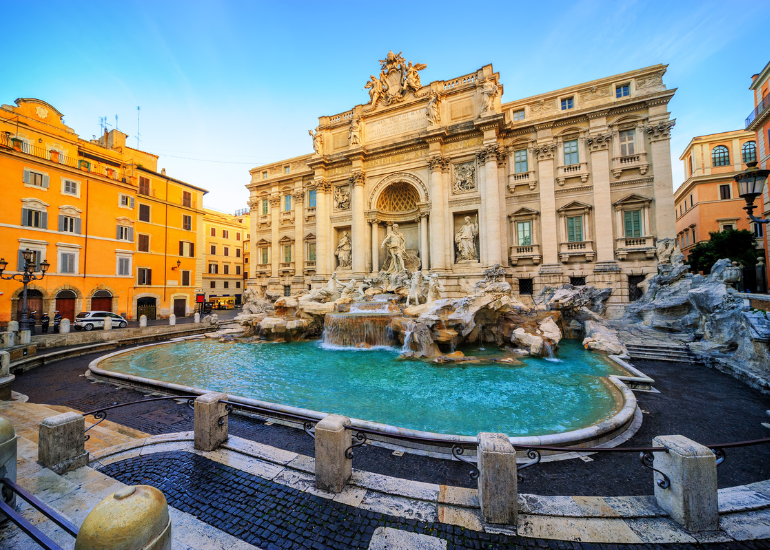
Budget dining options across Europe
Hitting up local markets and sampling street food is the perfect way to eat out on a budget in Europe. Tuck into tapas at the famous La Boqueria in Barcelona, Spain, sample sardines at the Bolhão Market in Porto, Portugal or try Hungarian specialties at the Great Market Hall in Budapest, Hungary.
Just a tip ¬– cash is the way to go at most markets or use a travel money card if that isn’t an option. You really don’t want to get served up extra fees every time you try a different local delicacy.
If you’re in self-catering accommodation and need supplies, there’s nothing quite like exploring local supermarkets. They’ll seem infinitely more interesting than the ones back home simply because they’re European. It’s a fact. Boozy bonus: many of them sell inexpensive local wines that you can pair with your home-cooked meal.
La Boqueria in Barcelona.png
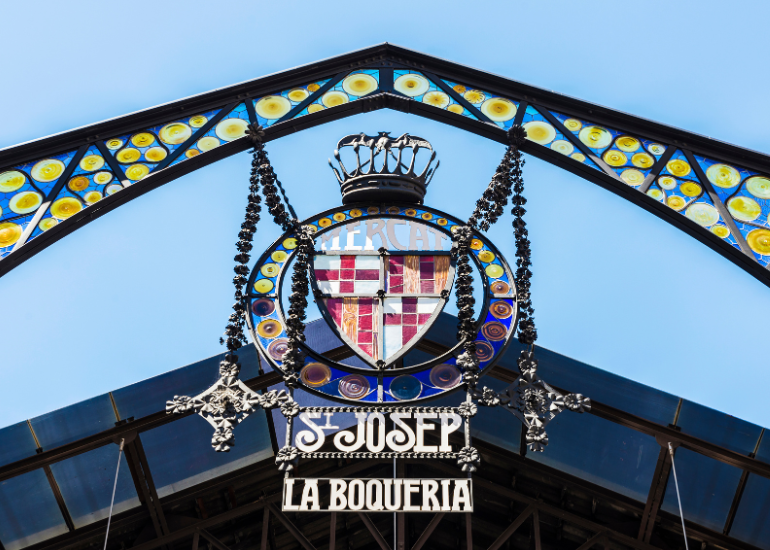
That’s a wrap on our complete budget guide to the continent. If Europe is always on your mind (and your social media), take these frugal travel strategies and save big on your travels.
Or, if you want a breakdown by country, read our ultimate guide to Europe .
RATE ALERT | The best time to exchange your AUD to Japanese Yen!
Your complete guide to european public transport, more like this.


5 Ways To Save Money Traveling to Europe in 2024 According to Locals
P lanning a trip to Europe can be somewhat daunting when it comes to your budget . If you plan to visit one or more of the 27 countries in the European Union (EU), you can eliminate concerns about exchange rates during your travel by visiting one or more of the 20 countries using the euro.
Check Out: 11 Expensive Vacation Destinations That Will Be Cheaper in 2024
For You: How To Get $340 Per Year in Cash Back on Gas and Other Things You Already Buy
Once you’ve picked the countries you want to visit and what you’d like to do, you’ll need to manage the expenses to be sure you can make it happen.
Here are five ways to save money traveling to and around Europe in 2024, according to locals.
Sponsored: Owe the IRS $10K or more? Schedule a FREE consultation to see if you qualify for tax relief.
Find the Right Source of Local Transportation
Habits in each country vary, so you’ll need to take that into consideration. For instance, carpooling services are a common travel method that the locals in France use to save money. If you’re traveling to Spain, you can take the Renfe AVLO to get to different cities like Seville or Valencia. It’s comfortable, fast and affordable. Prepaid cards can save you money with Portugal and Ireland’s trams, buses and city trains, while Greece offers a loyalty card program for its ferries. Rail Europe also offers rail passes .
Ideally, you should walk or bike as much as possible. Hiking is free and a great way to take in the sights. Renting a bike is relatively inexpensive if you need to get somewhere a bit more quickly. Additionally, to get to Europe in the first place, be sure to check out sites like Dollar Flight Club and Going to optimize your airfare.
Make Use of Free Attractions
In Denmark, you can kayak for free with Green Kayak , a nice way to explore and help the environment. In France, La Fête de la Musique offers free concerts, and La Nuit des Musées offers free museum visits during the evening. Many of Ireland’s museums are free all the time, including the Galway City Museum and the Irish Museum of Modern Art. On Sundays, museums have free admission in Lisbon and Barcelona.
There are also plenty of landmarks to visit for free. Nice is home to the Monastere de Cimiez, Copenhagen has its Botanical Garden and Madrid features the Templo de Debod.
Select Alternative Lodging
Rather than expensive hotels, you can opt for local Airbnb’s, bed and breakfasts and hostels. Hostels are cheaper and less luxurious and you’ll likely have to share a communal bathroom, but they commonly have other perks like free breakfast and laundry.
If they’re still not to your fancy, micro hotels are a step up in quality and may even come with a private en-suite bathroom. You should also book directly whenever possible because you might receive a complimentary breakfast or upgrade from the front desk. Plus, if something goes wrong, it’s easier to deal directly with the lodging site instead of a third party.
Be Selective About the Items You Consider Purchasing
It’s easy for vendors to sell souvenirs at unreasonable costs because they’re banking on you wanting to bring something back to remember the experience — regardless of whether or not the item in question is even of good quality. Be selective about parting with your money.
In countries like France and Portugal, locals recommend that you purchase drinks at a market rather than at a bar. Then, you’ll be able to spend more time immersing yourself in the unfamiliar scenery.
More From GOBankingRates
- Downsizing for Retirement? Avoid These 6 Mistakes
- 5 Rare Coins That Sold for At Least $600,000
- These 10 Aldi Brand Products Are Worth Every Penny
- The Biggest Mistake People Make With Their Tax Refund -- And How to Avoid It
This article originally appeared on GOBankingRates.com : 5 Ways To Save Money Traveling to Europe in 2024 According to Locals
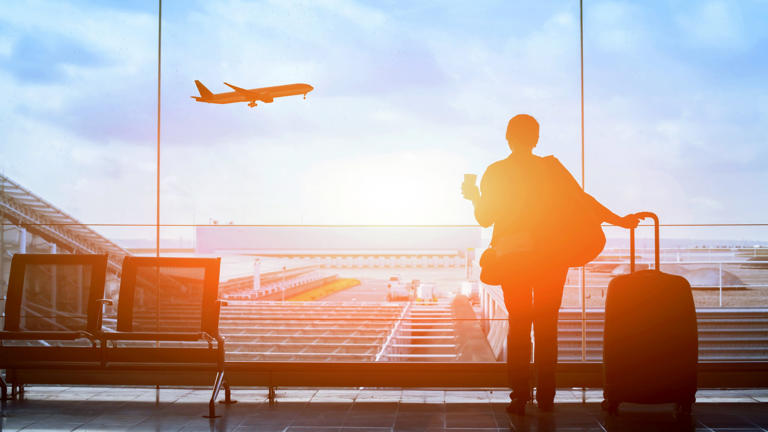

Did Marie Antoinette Have the Best Bedroom in Europe?
Who’s the most powerful ruler of them all? For a new series, one photographer found answers—in the bedroom.
Running as a parallel to this project is another ongoing work in progress that trades the stage for more intimate—though certainly no less performative—environs: the royal bedchamber. For this series, Leventi has been letting himself into the private quarters of Europe's grand palaces and aristocratic piles. Thought gilded thrones were the true seats of power? Think again.
We asked the photographer to share a few of these bedrooms with T&C . Then we got to work uncovering the secrets buried within. Where did Mad King Ludwig of Bavaria spend his nights? Just how much did a former prime minister spend on his trimmings alone? And did Marie Antoinette have the best bedroom of them all? Find out below.
Herrenchiemsee, Herreninsel, Germany

King Ludwig II of Bavaria built such extravagant castles, including this one modeled on Versailles, that he was called the Fairytale King. But his bankrupting spending habits (among other eccentricities) earned him a more enduring moniker: Mad King. Guided tours only, herrenchiemsee.de
Chatsworth House, Derbyshire, England

In 18th-century England, Lord Chamberlains had first dibs on the furniture of deceased kings, which is how the fourth Duke of Devonshire ended up with the damask bunk of George II, who reportedly died in it. As they say, one man’s deathbed is another man’s status symbol. Open January–May, chatsworth.org
Houghton Hall, Norfolk, England
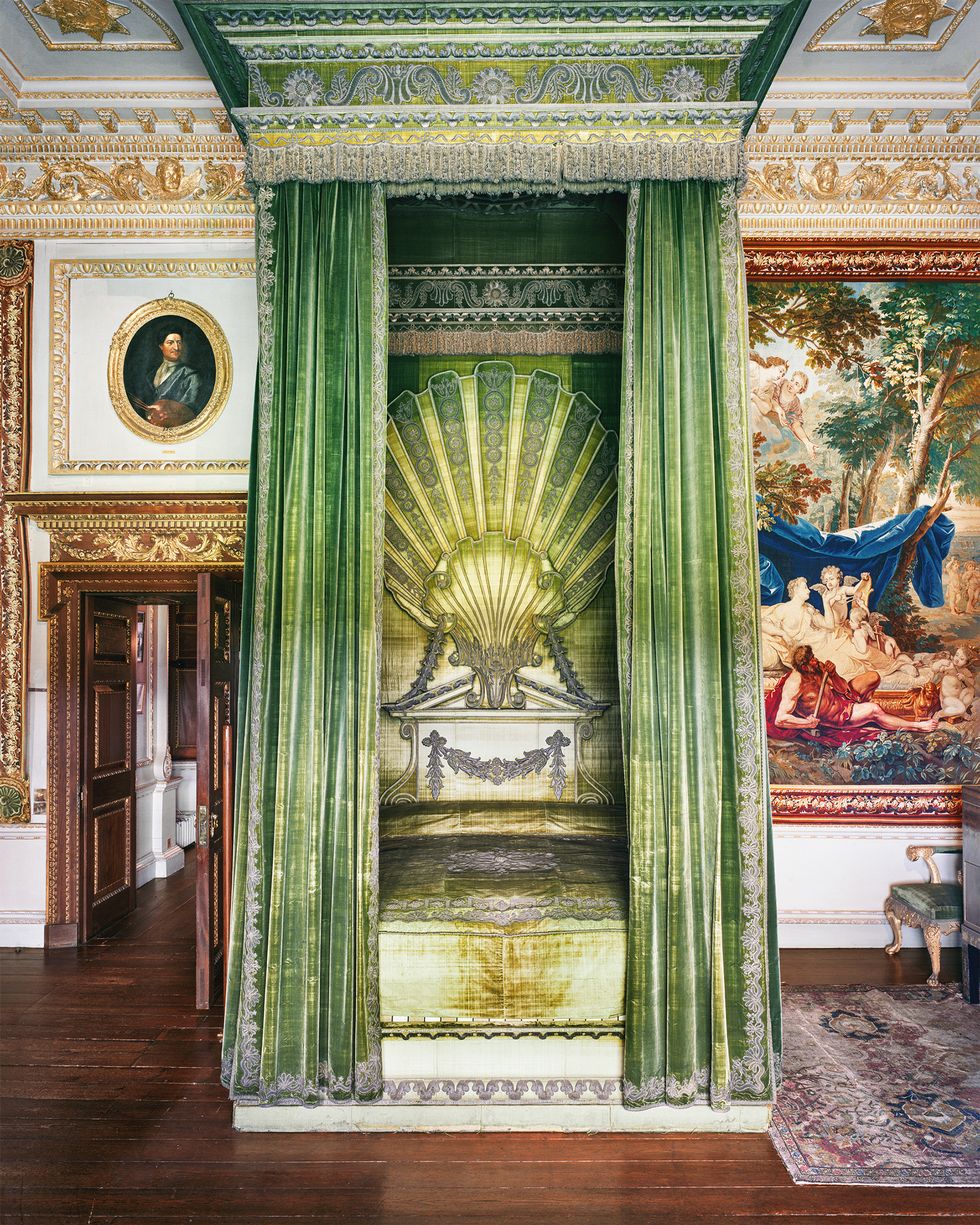
Robert Walpole wasn’t a king, but as England’s first prime minister he considered himself deserving of just as fabulous a bed for his home at Houghton. The velvet and gilt trimmings alone cost £1,200. That was in 1732; today it would be more than $300,000. Open April–October, houghtonhall.com
Chateau de Versailles, Versailles, France

Marie Antoinette regularly redecorated her apartments at Versailles to suit her taste du jour. She did the same with her private chambers, which were accessed via a secret door next to her bed and where she could take a break from royal obligations—and, presumably, her husband. chateauversailles.fr
This story appears in the April 2024 issue of Town & Country.
@media(min-width: 40.625rem){.css-1jdielu:before{margin:0.625rem 0.625rem 0;width:3.5rem;-webkit-filter:invert(17%) sepia(72%) saturate(710%) hue-rotate(181deg) brightness(97%) contrast(97%);filter:invert(17%) sepia(72%) saturate(710%) hue-rotate(181deg) brightness(97%) contrast(97%);height:1.5rem;content:'';display:inline-block;-webkit-transform:scale(-1, 1);-moz-transform:scale(-1, 1);-ms-transform:scale(-1, 1);transform:scale(-1, 1);background-repeat:no-repeat;}.loaded .css-1jdielu:before{background-image:url(/_assets/design-tokens/townandcountrymag/static/images/diamond-header-design-element.80fb60e.svg);}}@media(min-width: 64rem){.css-1jdielu:before{margin:0 0.625rem 0.25rem;}} In the Magazine @media(min-width: 40.625rem){.css-128xfoy:before{margin:0.625rem 0.625rem 0;width:3.5rem;-webkit-filter:invert(17%) sepia(72%) saturate(710%) hue-rotate(181deg) brightness(97%) contrast(97%);filter:invert(17%) sepia(72%) saturate(710%) hue-rotate(181deg) brightness(97%) contrast(97%);height:1.5rem;content:'';display:inline-block;background-repeat:no-repeat;}.loaded .css-128xfoy:before{background-image:url(/_assets/design-tokens/townandcountrymag/static/images/diamond-header-design-element.80fb60e.svg);}}@media(min-width: 64rem){.css-128xfoy:before{margin:0 0.625rem 0.25rem;}}

Why Billionaires Are Buying Up Sports Teams

Sanderson Launches New Home Collection

The Dawn of the Dumb House

Investment Portfolio April 2024: Wedding Edition

Zoe Otedola & Cole Weston's Bucolic Wedding

Emma Molz & Warren Elgort's Park City Wedding

The New Must in Wedding Prep: An Insta Makeover

Alejandra Alonso Rojas Launches a New Bridal Line

Exclusive: The Couch-Surfing Principessa

Why Ivy Leaguers Still Join Secret Societies

Murder and the Myth of the Good Family

IMAGES
VIDEO
COMMENTS
You can do this by filing a FinCEN Form 105 online with the U.S. Customs and Borders Protection.². Bringing cash into Europe - if you're bringing more than €10,000 (or the equivalent in another currency) into the European Union, you must declare it to the customs authorities in the country you're entering.
Very roughly determine what the unit of currency (euros, kroner, Swiss francs, or whatever) is worth in American dollars. For example, let's say the exchange rate is €1 = $1.10. If a strudel costs €5, then it costs five times $1.10, or $5.50. Ten euros, at this rate, would be about $11, and €250 = $275 (figure 250 plus about 10 percent more).
Up to 4.60% APY on savings. $0 account or overdraft fees. Get a $300 bonus with direct deposits of $5,000 or more. Travel rewards with no annual fee. Go to site Terms apply, see rates & fees. 20,000 miles (equal to $200 in travel) after spending $500 in the first 3 months. Earn unlimited 1.25x miles on all purchases.
Rules for travelling with cash when entering or leaving the EU. If you plan to enter or leave the EU with €10 000 in cash (or its equivalent in other currencies) or carry one or more of the commodities listed below (to the value of €10 000) y ou must declare it to the customs authorities in the EU country you are entering or leaving, using ...
3 Best practices for getting cash out in Europe. 3.1 Avoid traveler's checks. 3.2 Know the rough rate for conversion. 3.3 Ensure you have at least one debit card with Visa or Mastercard, if not more. 3.4 Make sure your card is chip and pin. 4 ATMs in Europe.
When planning a trip to Europe, it's important to consider how much cash to bring. While credit cards are widely accepted, having some cash on hand is still necessary for certain expenses. The amount of cash to bring depends on the destination, length of stay, and planned activities. It's recommended to bring a mix of euros and local currency ...
If your money isn't in cash, there's no limit to how much you can travel with. If it is in cash, however, you'll have to declare it if it's over 10,000 euros (or the equivalent in your local currency) when entering or exiting an EU member state from outside of the EU. If you're travelling to a European country that isn't a member of the EU ...
7: Travelex Money Card Mastercard¹². Last on our list is something a little different. This is the Travelex Money Card, a prepaid Mastercard that you load up with euros before your trip. You can also use it outside of Europe, as it supports 15 available currencies including USD, GBP, AUD and CAD.
Most international travelers will end up using a combination of cash and cards when visiting Europe. While credit cards are accepted in most situations, currency can be more convenient for public ...
Travel Tips: Money. Use your money wisely in Europe. The articles below have my best advice on the best time to use cash or card — and how to avoid unnecessary fees either way — as well as tipping etiquette, and how shoppers can take advantage of VAT refunds. Cash and Currency Tips for Europe. Using Credit Cards in Europe.
1. Use Skyscanner. Skyscanner is a game-changer when it comes to booking flights. It's a flight comparison website that works extremely well for flights to and around Europe. Skyscanner is a Scottish company. It's based in Edinburgh and when it comes to finding the best fares in Europe, it sets the standard.
Tip #3: Do not treat a money belt like a wallet. "A money belt is not a substitute for a handbag or wallet. It is essentially a 'body safe'. You do not access it during the day or in public ...
23. Buy Your Groceries European-Style. To avoid outrageous restaurant overcharges, visit a local grocery store and put together a meal. Shopping for food that's good for your wallet at supermarkets, small groceries, and farmers' markets, will save you a good deal of money on food while traveling in Europe.
Almost all European airlines charge for checked baggage -- and many taxi drivers around Europe will also add on fees for luggage, too. You can avoid this by packing light and right, using things like packing cubes or wearing travel clothing. 10. Do a free walking tour. Most European cities offer free walking tours.
Here an overdependence on plastic can shape the Europe you experience. Pedro's Pension, the friendly guide at the cathedral, and most merchants in the market don't take credit cards. Going through the Back Door often means using hard local cash. And having a stash of cash as a backup is always smart. Finding Cash Machines
1. Have a no-fee debit card. To get cash from any ATM, you will need a debit card. Having the right debit card for foreign ATM withdrawals is extremely important as it can saving hundreds or even thousands of dollars a year on fees that you don't need to pay! Some of the things you should look for in a debit card for foreign ATM withdrawals ...
From AU$1,680^ per person. 7 nights in Paris, 7 nights in Barcelona, 7 nights in Rome and 7 nights in Athens (in budget accommodation) Public Transport. AU$450. For a youth, 2nd class ticket that allows travel on 5 days within 1 month, for 5 European countries of more. Total.
2. Avoid Currency Exchange Kiosks at Airports. If you don't have time to get cash at the bank before your trip, it can be tempting to get foreign currency at an airport kiosk or currency ...
Add travel to your monthly budget and start allocating monthly savings to your European vacation fund! (© smile35/Adobe Stock) 3. Cut Unnecessary Expenses. The easiest way to save money for a trip to Europe is by reallocating the money you typically spend on variable expenses in the everyday expenses and splurges categories of your budget to your travel fund.
Revolut is our top choice for travel money because it charges zero fees for first £1,000 per month that you exchange. The platform works entirely by desktop or smartphone, and they send you a debit card to access your travel money. ... We always recommend that you get cash at an ATM in Europe with a multi-currency account card like the Wise ...
Read Rick's full article, look for updates form the RS crew, study other travel forums especially those devoted to analyzing travel credit cards. The old advice on cash is to acquire it locally upon arrival from an ATM. Tap or even tapless transactions are the norm in most regions and businesses.
Tips for saving money in Europe. Don't exchange at airports or at home. No need to exchange cash before you travel — use your travel money card to spend or withdraw money from an ATM. Choose EUR as the local currency. Choose the local currency when spending with your card in shops and restaurants. Save with a travel money card
Get a travel money card to save on exchange fees Speaking of, instead of relying on your credit card, having a travel money card like our Travel Money Oz Currency Pass, can mean serious savings in Europe. Lock in your exchange rate, load up your card with local currency and avoid conversion fees at your destination.
Here are five ways to save money traveling to and around Europe in 2024, according to locals. Sponsored: Owe the IRS $10K or more?Schedule a FREE consultation to see if you qualify for tax relief.
Europe's visa waiver program is being postponed until 2025. From ETIAS to accommodation taxes in Europe, including charges for cruise passengers and Venice's entry fee, here are the expenses ...
EU Regulation on cash controls when entering or leaving the EU. Last checked: 04/07/2023. FAQs - Roles for leaving and entering the EU with cash. Rules for travelling in the EU with cash, covering banknotes, coins, gold and cheques. When and how to complete a cash declaration.
A visit to an amber museum and a tour of one of Europe's largest markets, guided by a Latvian chef. There is availability in June, July and August and the cost is $4,545 (prices listed are per ...
Croatia: For sunshine undamped by tax woes. Visa length: One year, with possibility to renew Application fee: Around €60 Income requirement: Around €2,500/month Croatia launched its one-year ...
Airspace in Jordan, Lebanon, Israel and other parts of the Middle East reopened on Sunday but some flights were still canceled.
King Ludwig II of Bavaria built such extravagant castles, including this one modeled on Versailles, that he was called the Fairytale King. But his bankrupting spending habits (among other ...